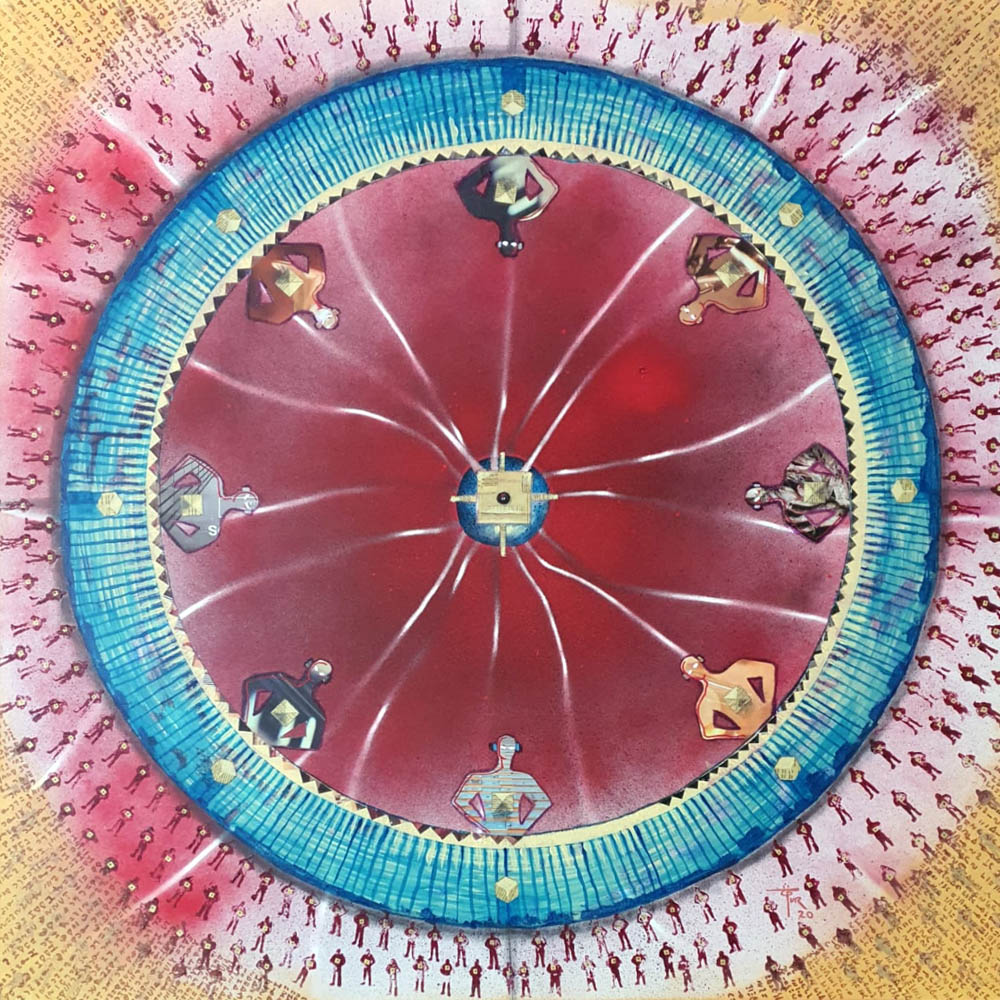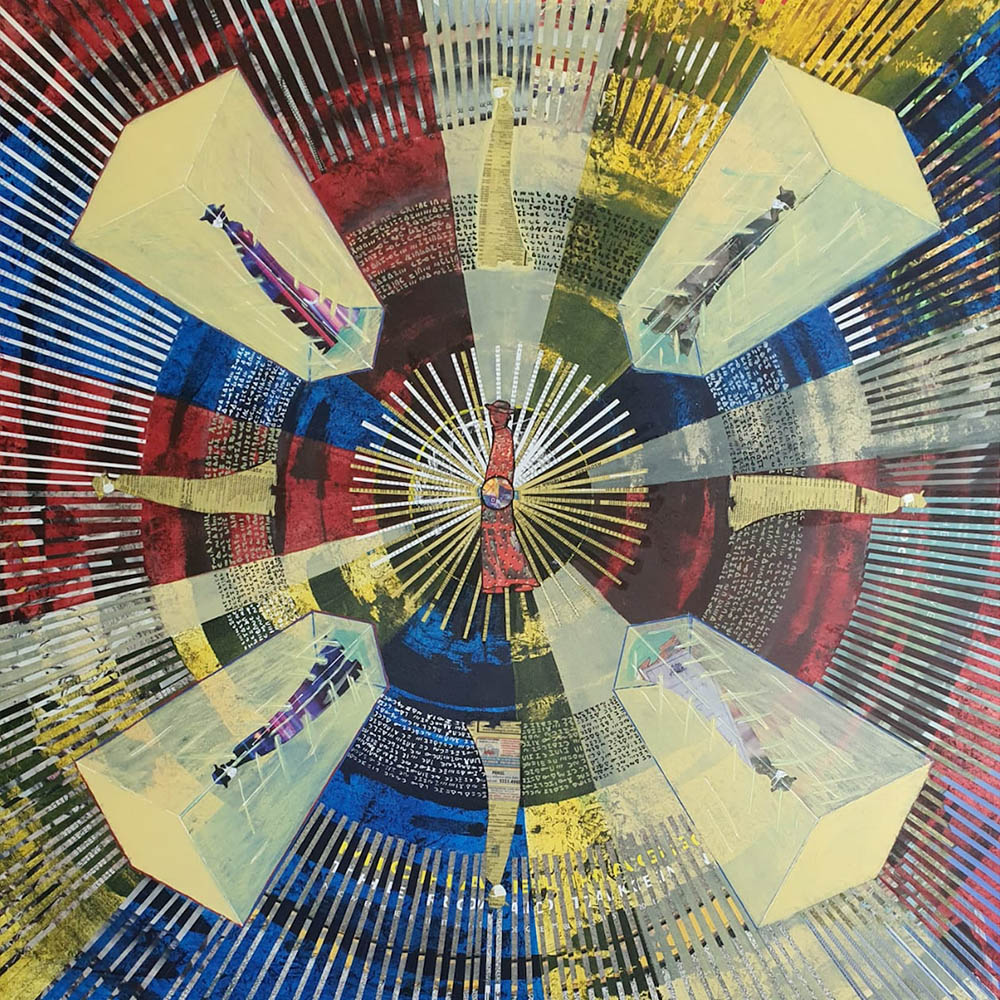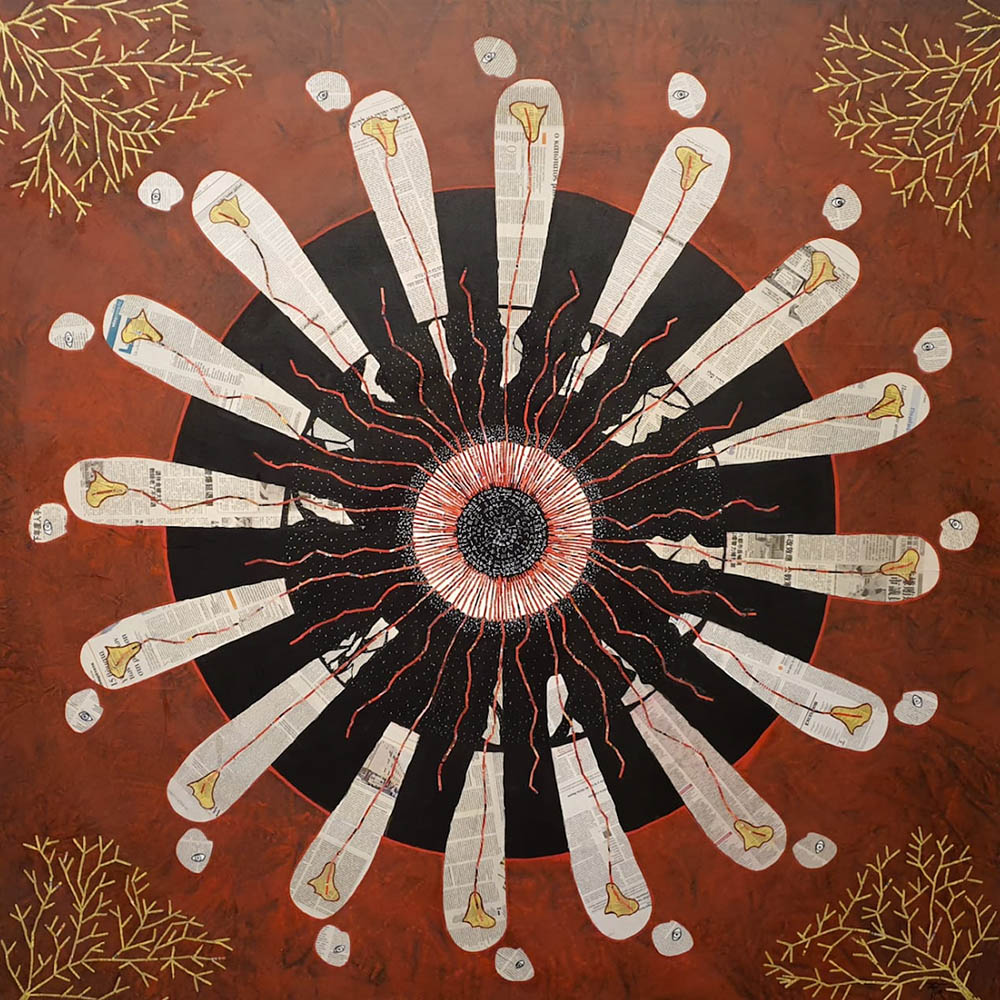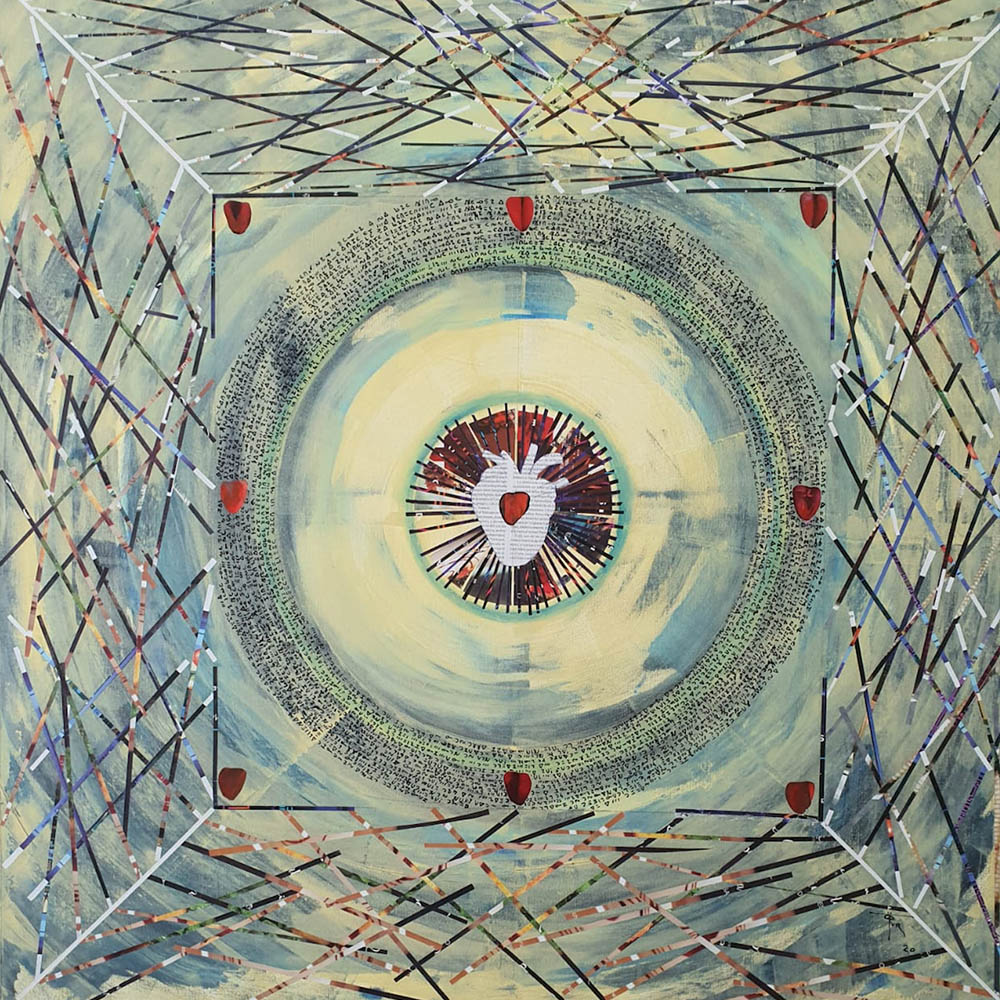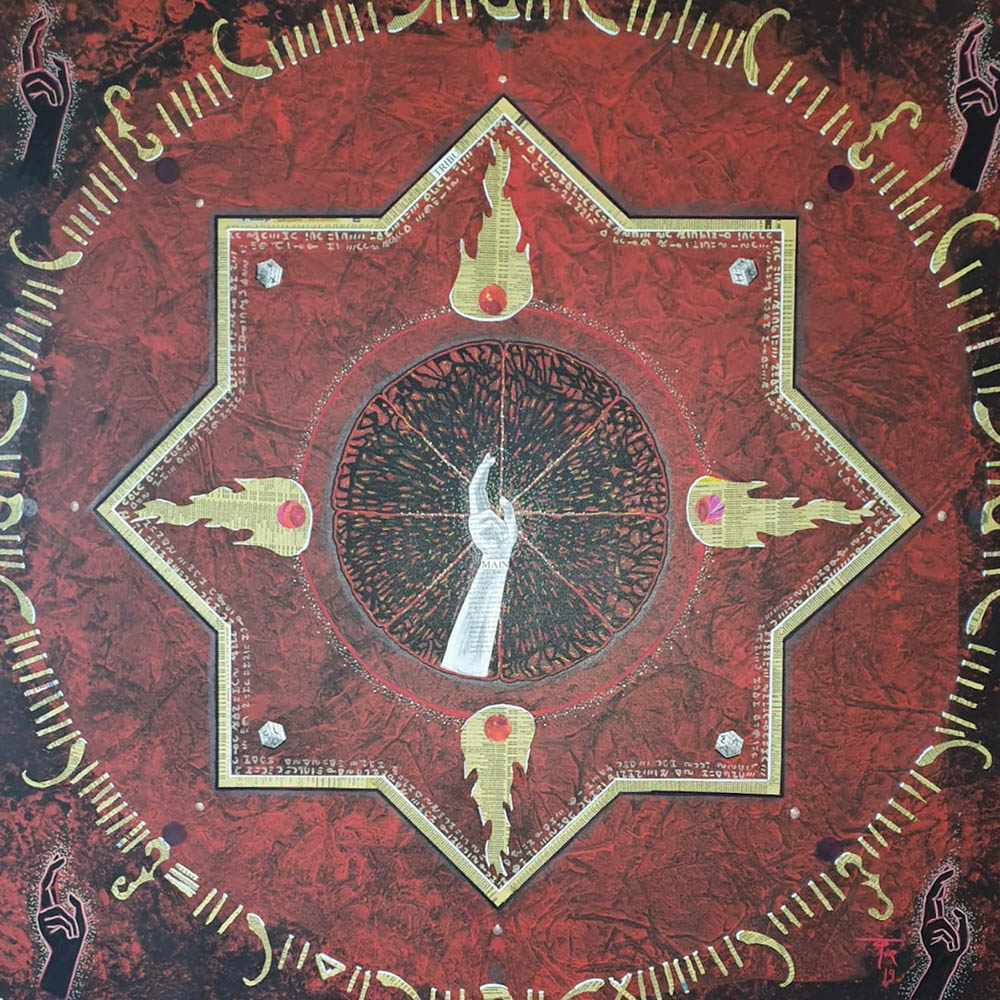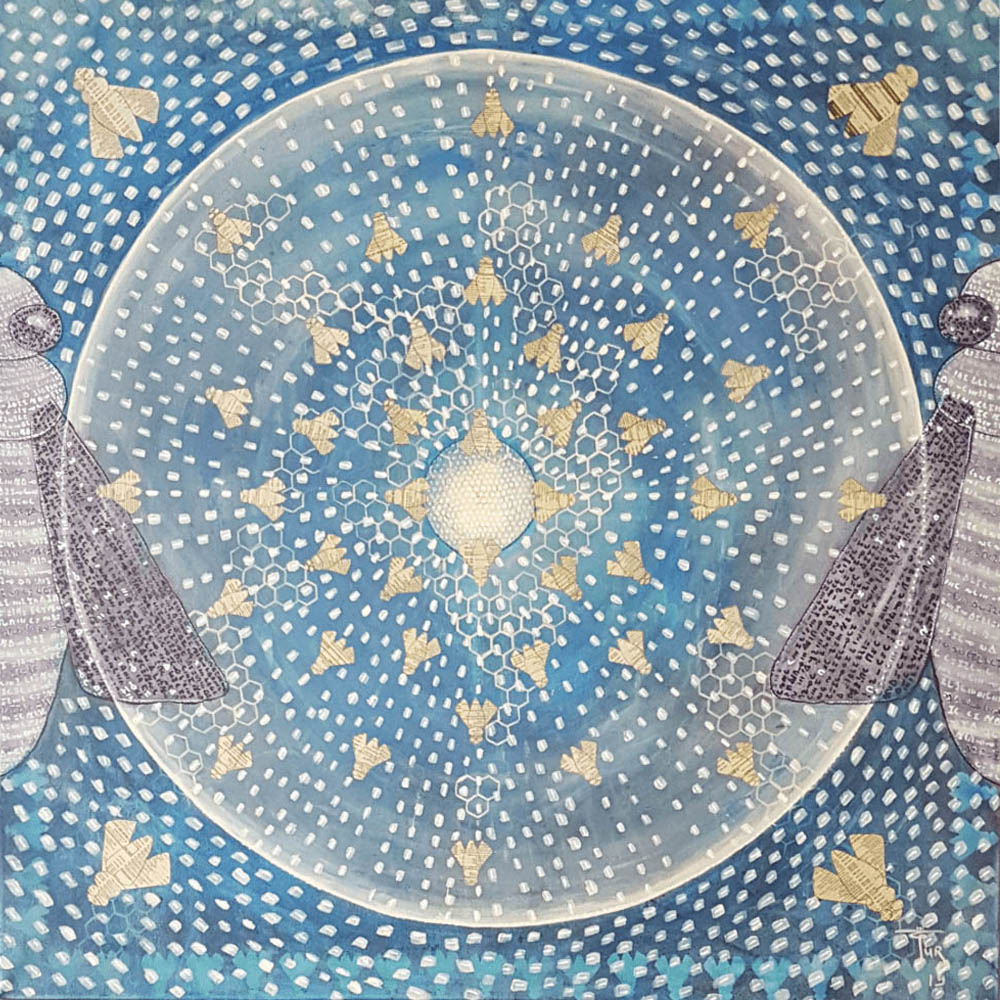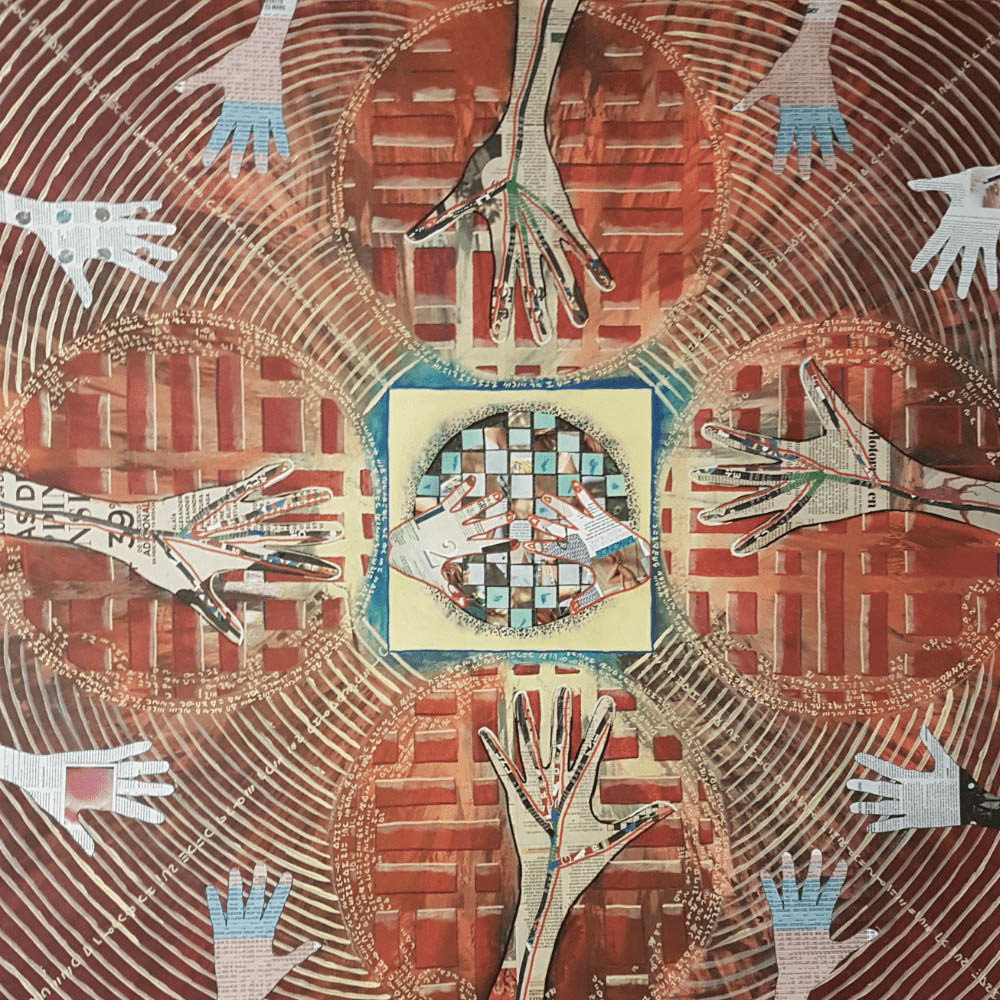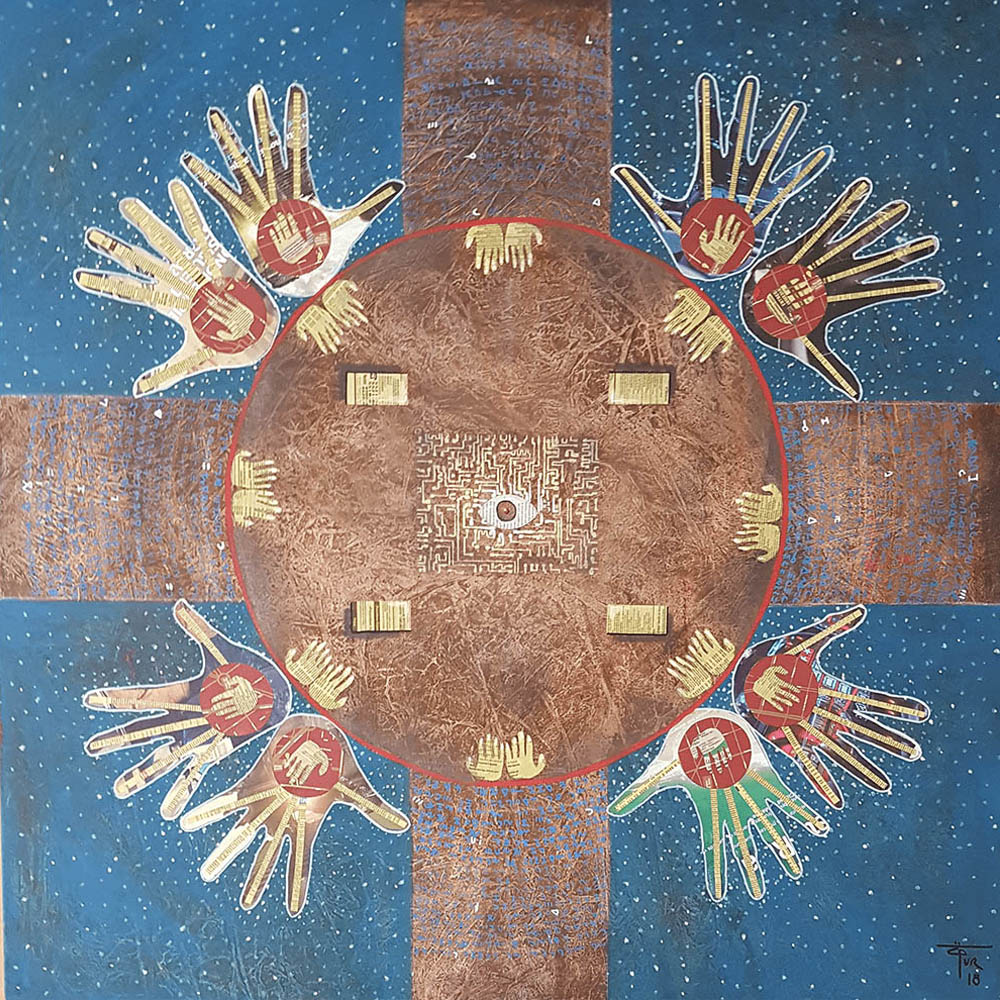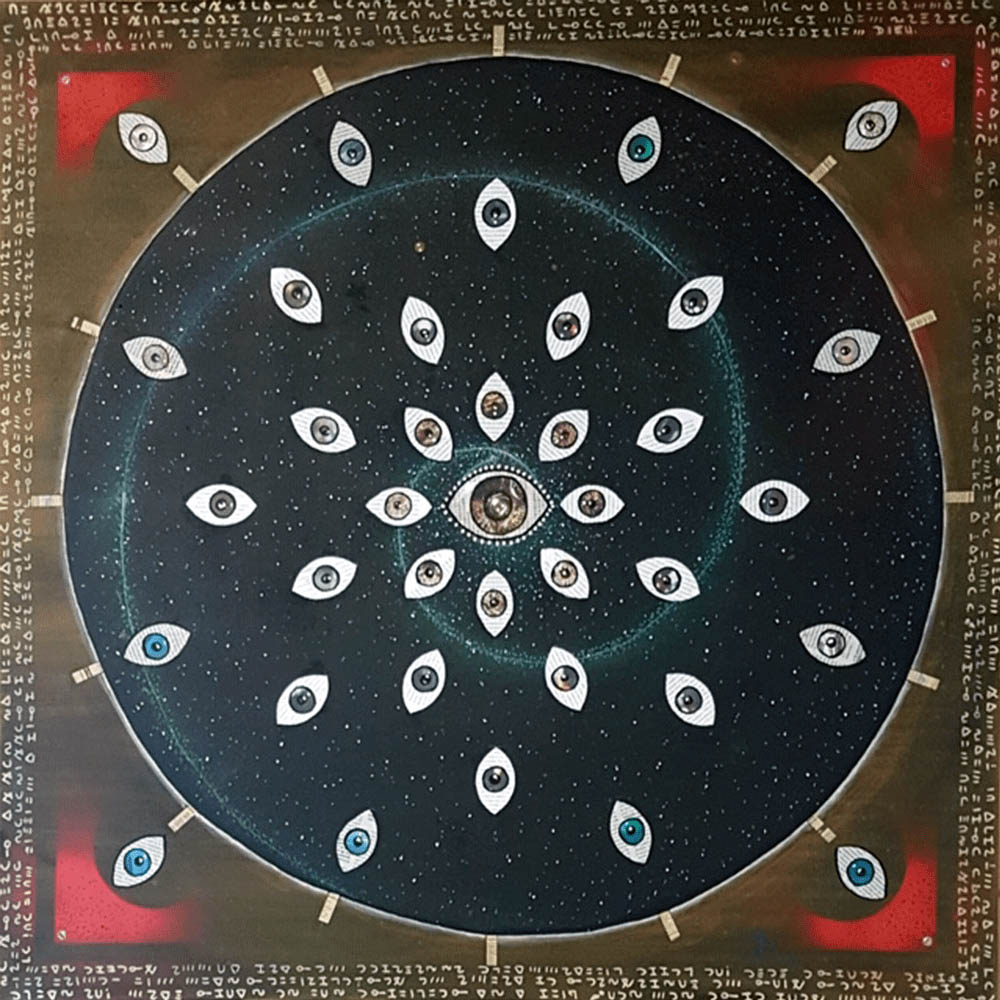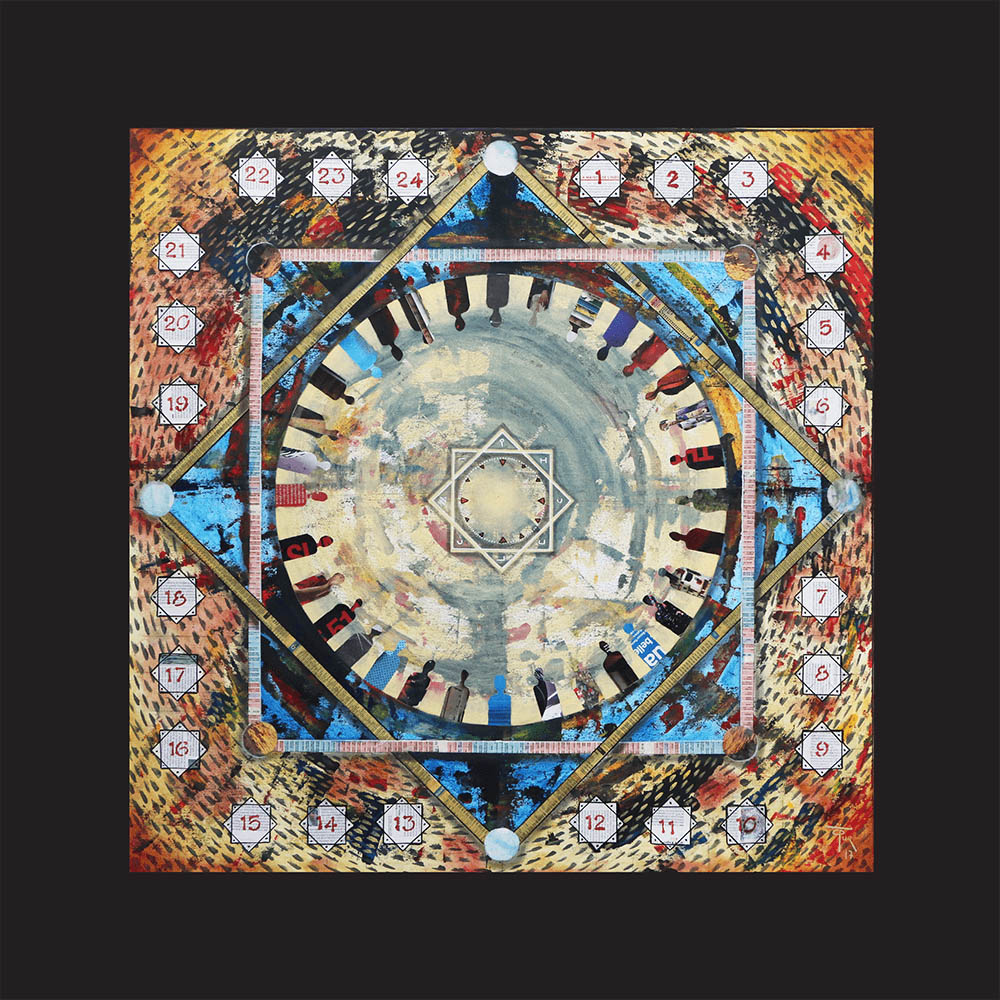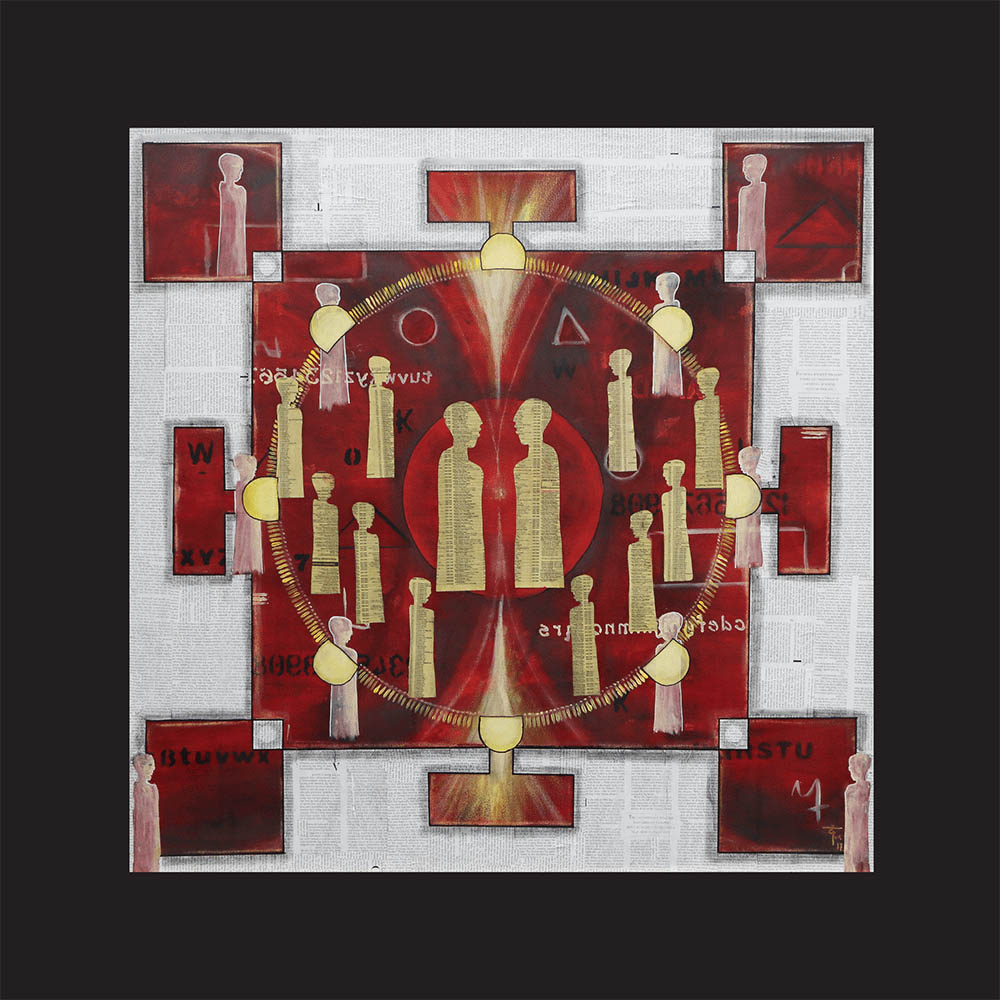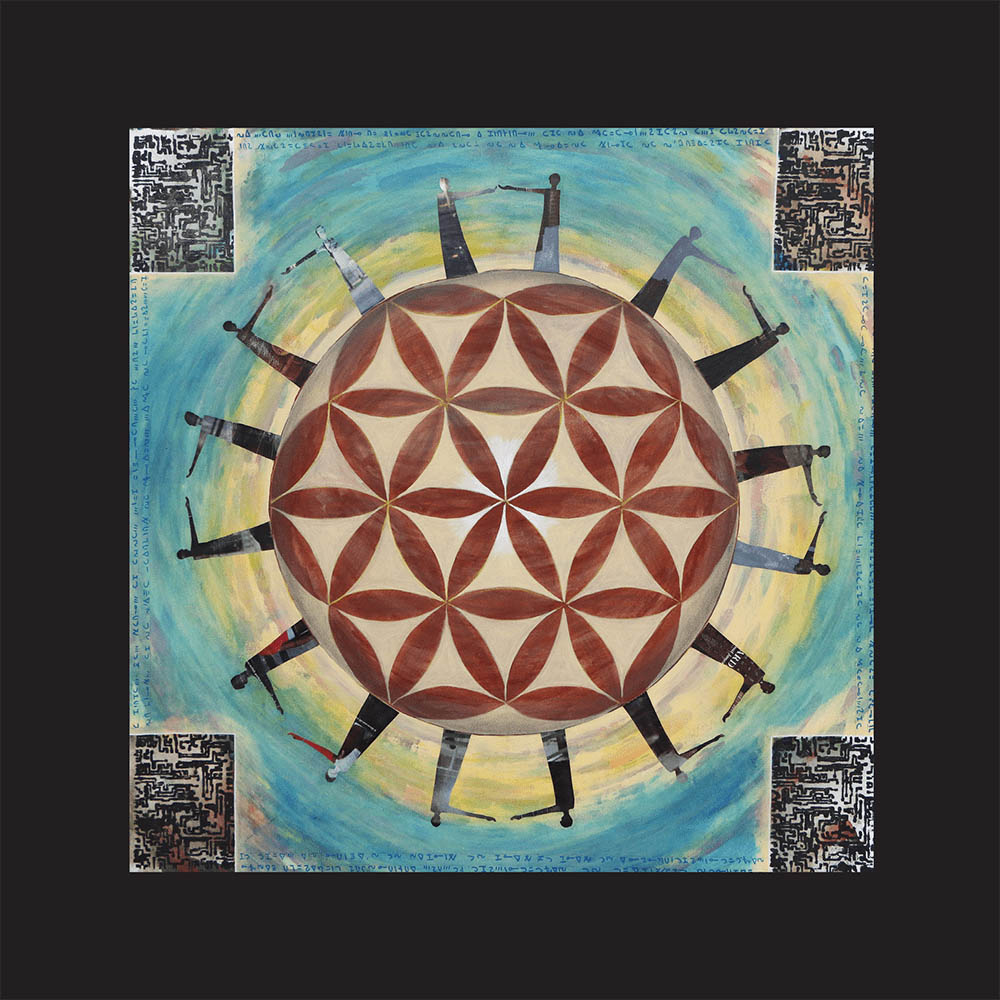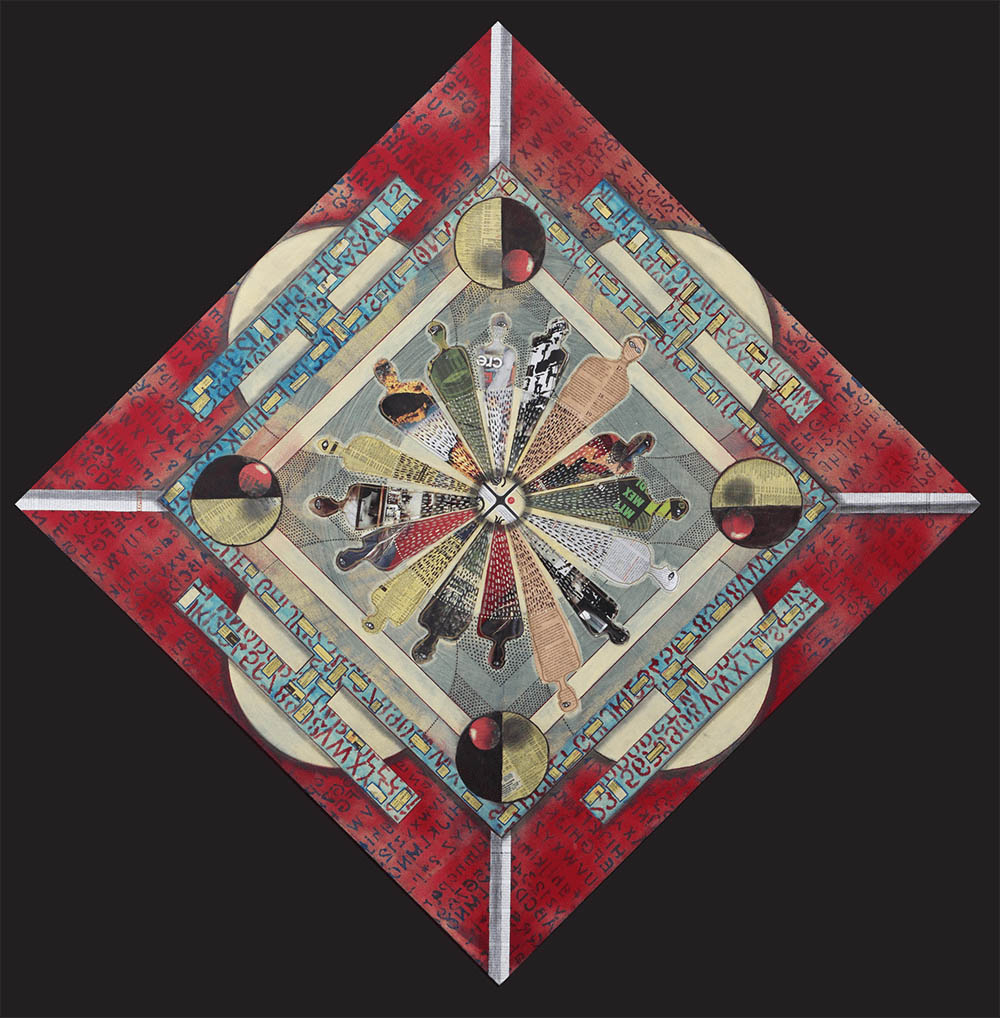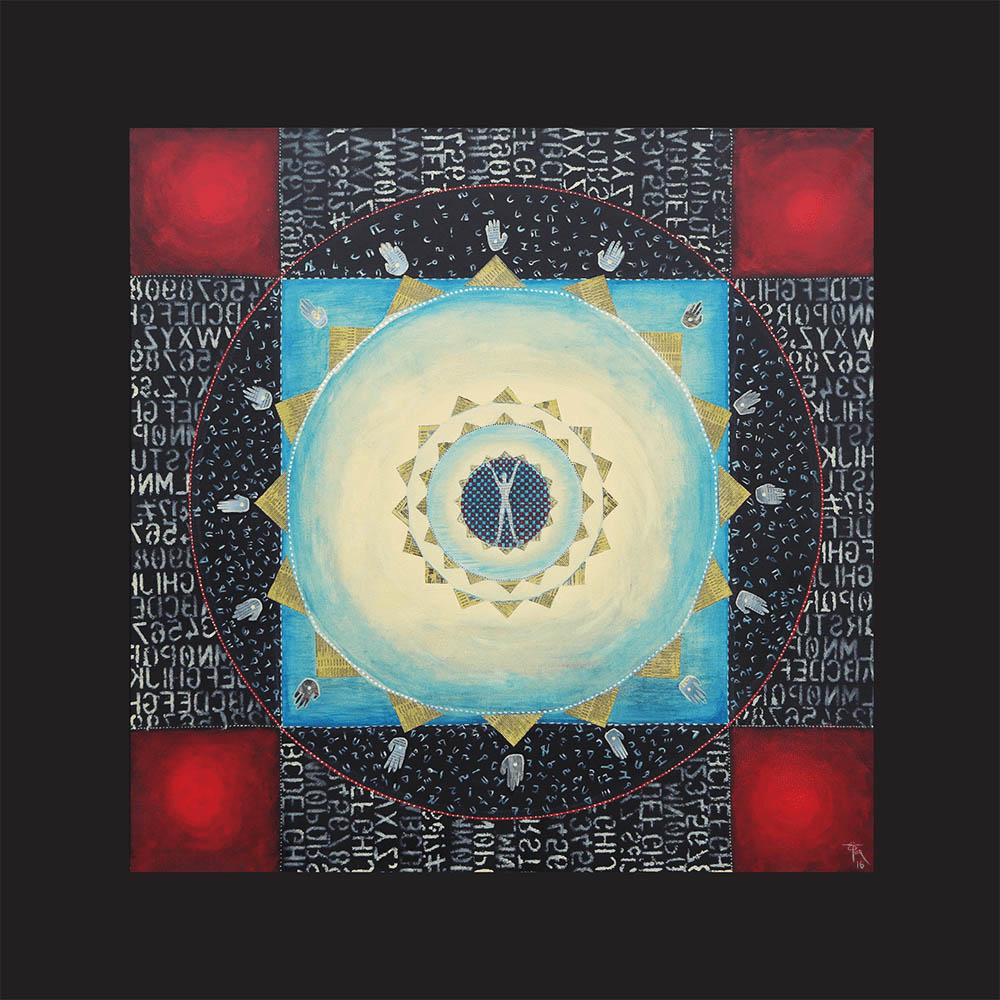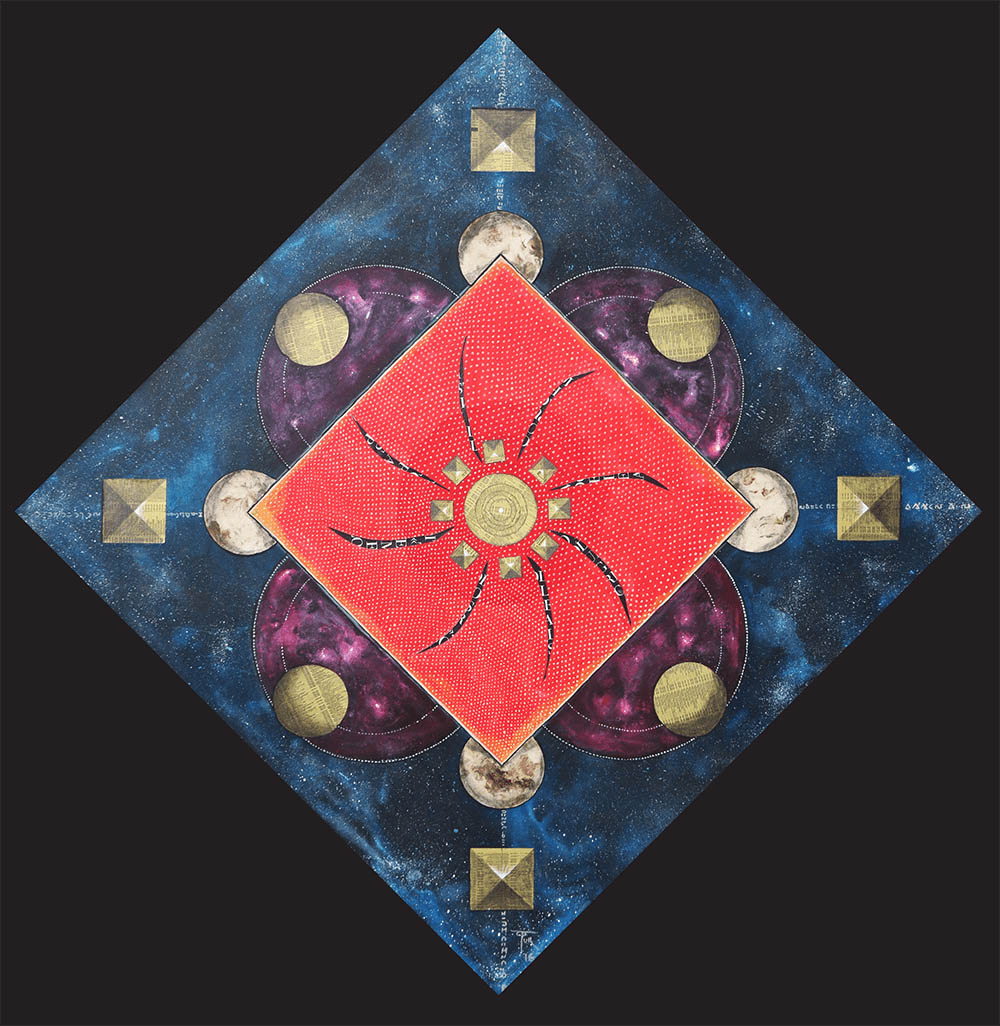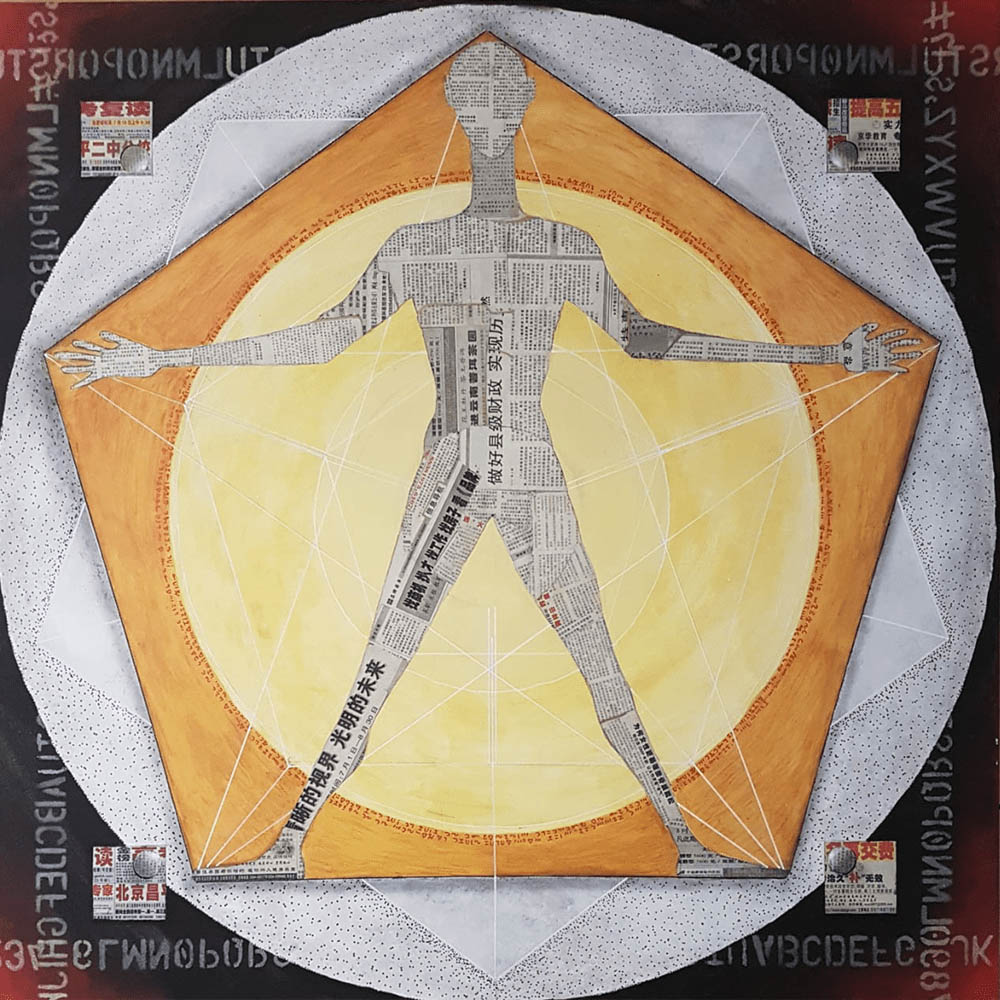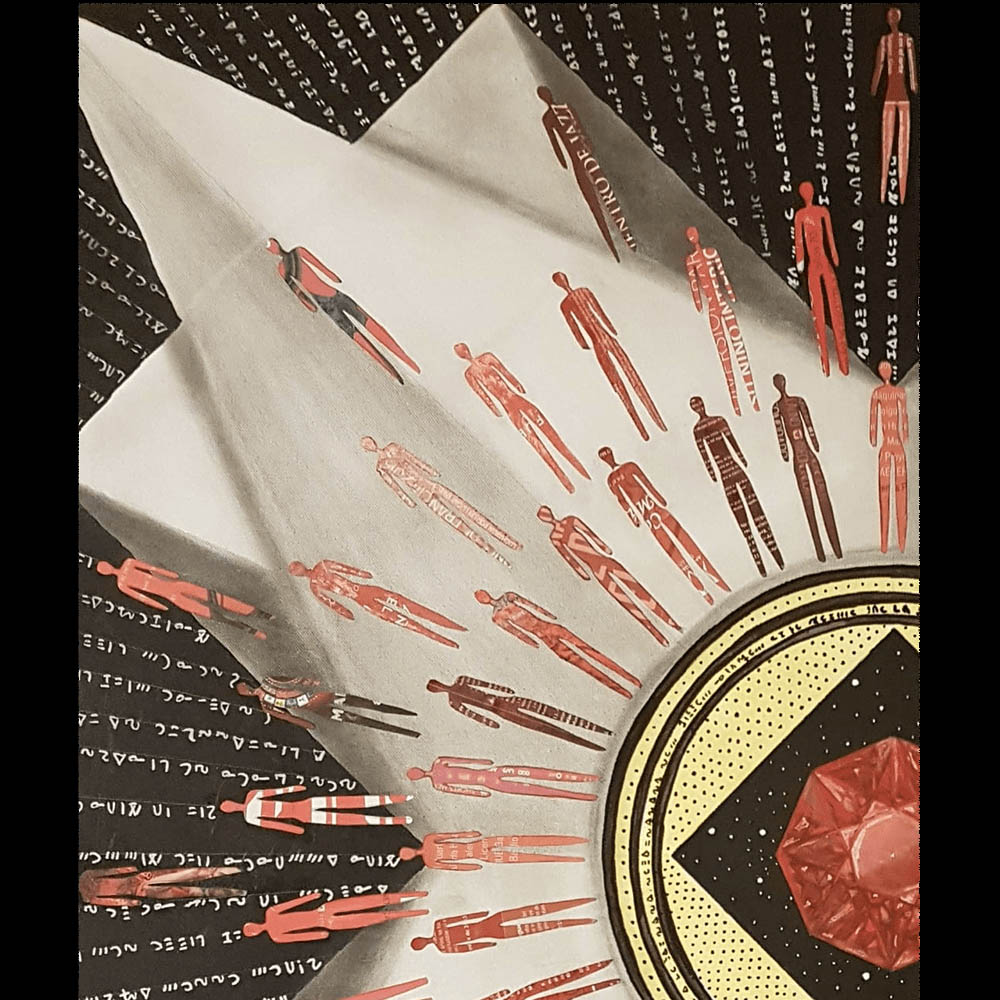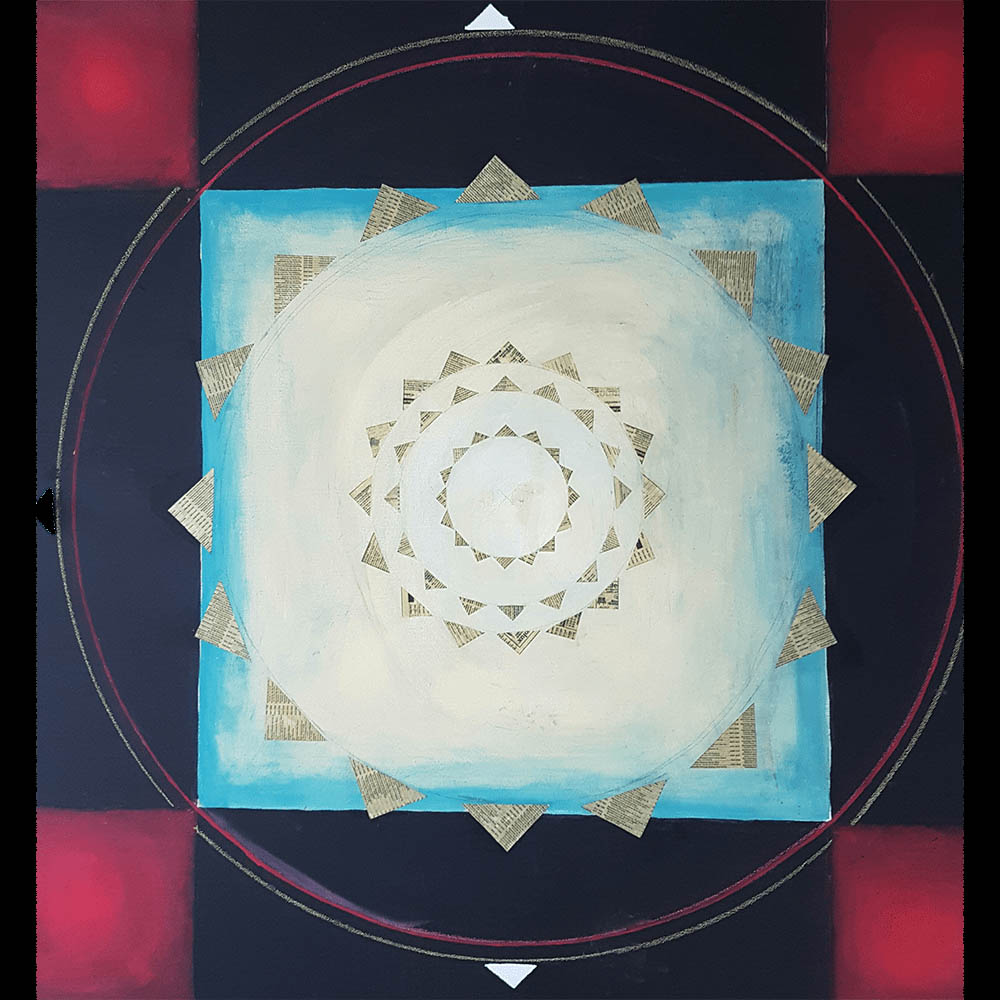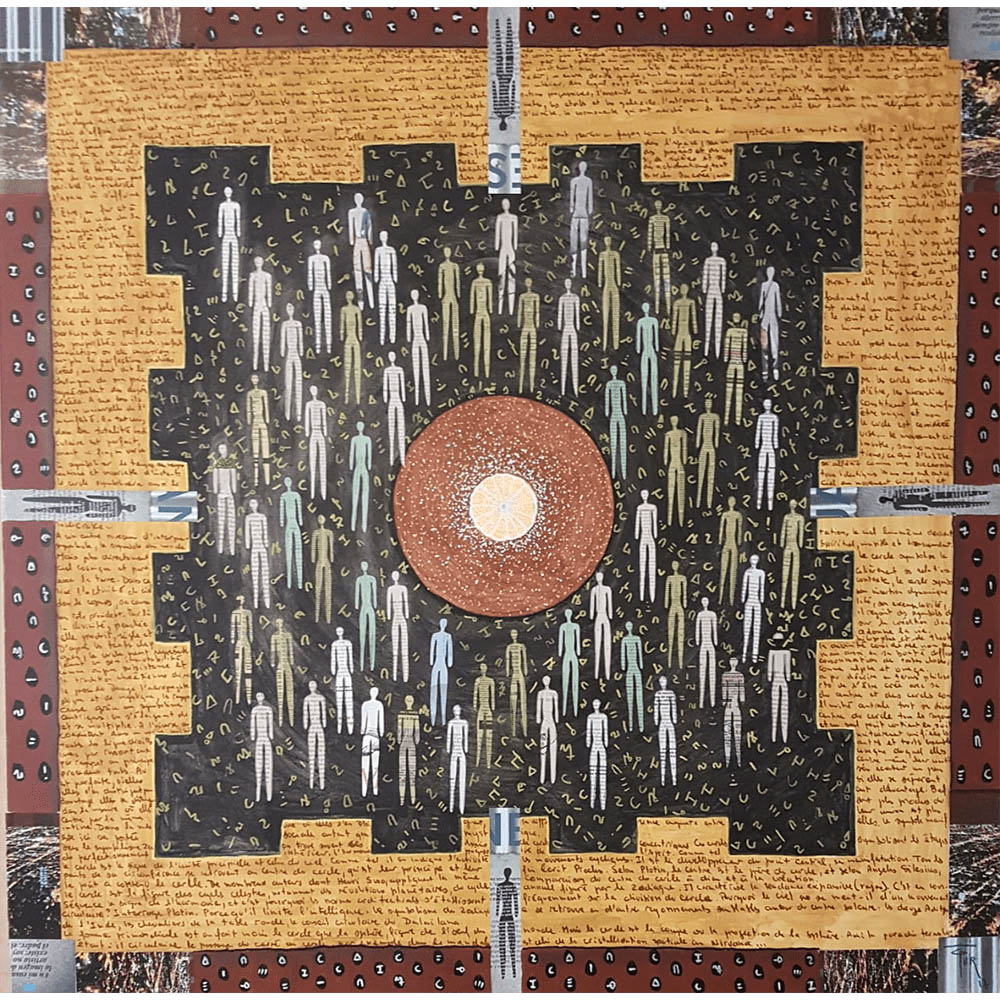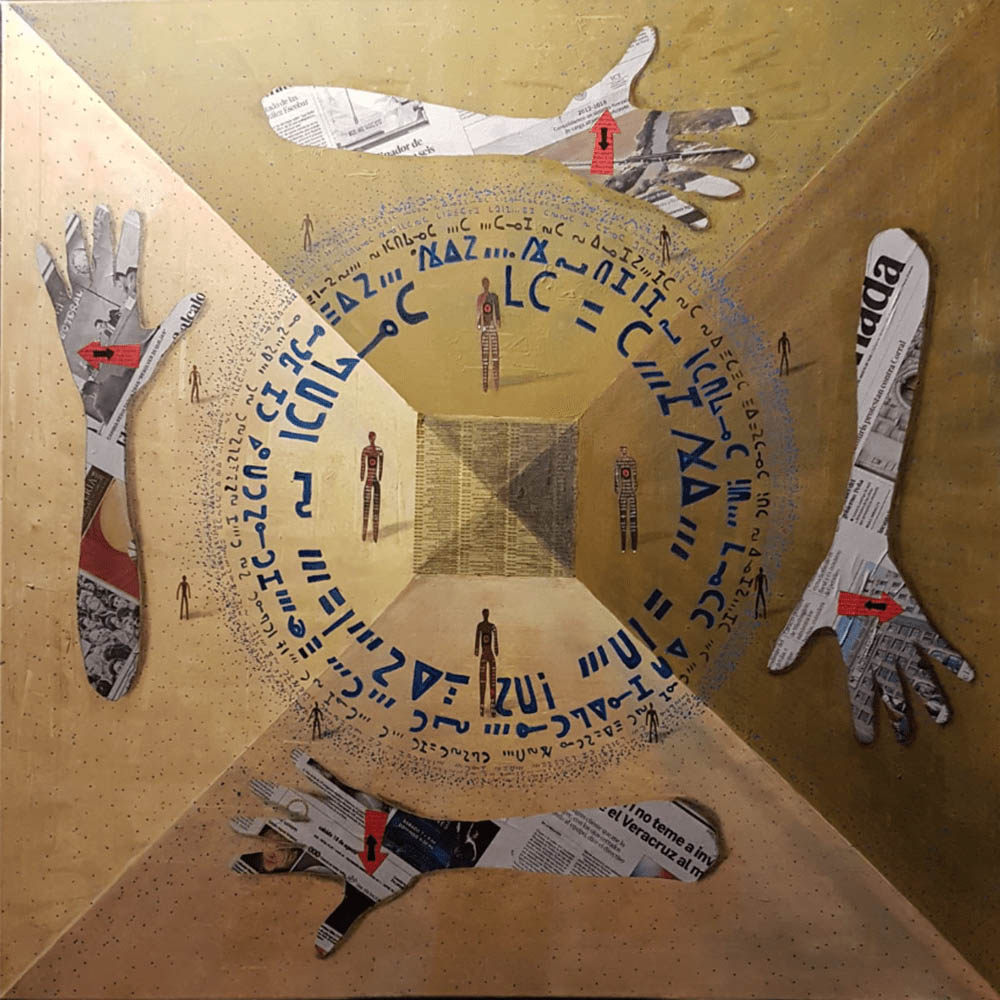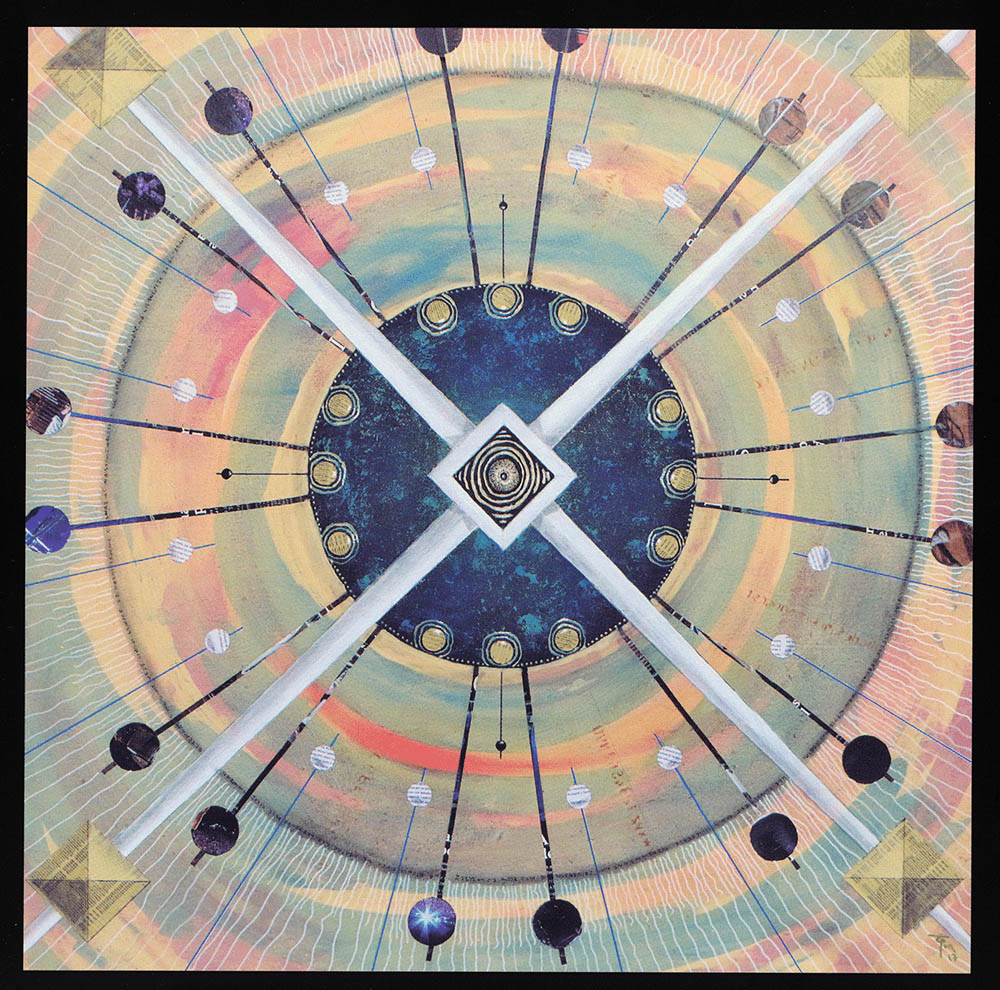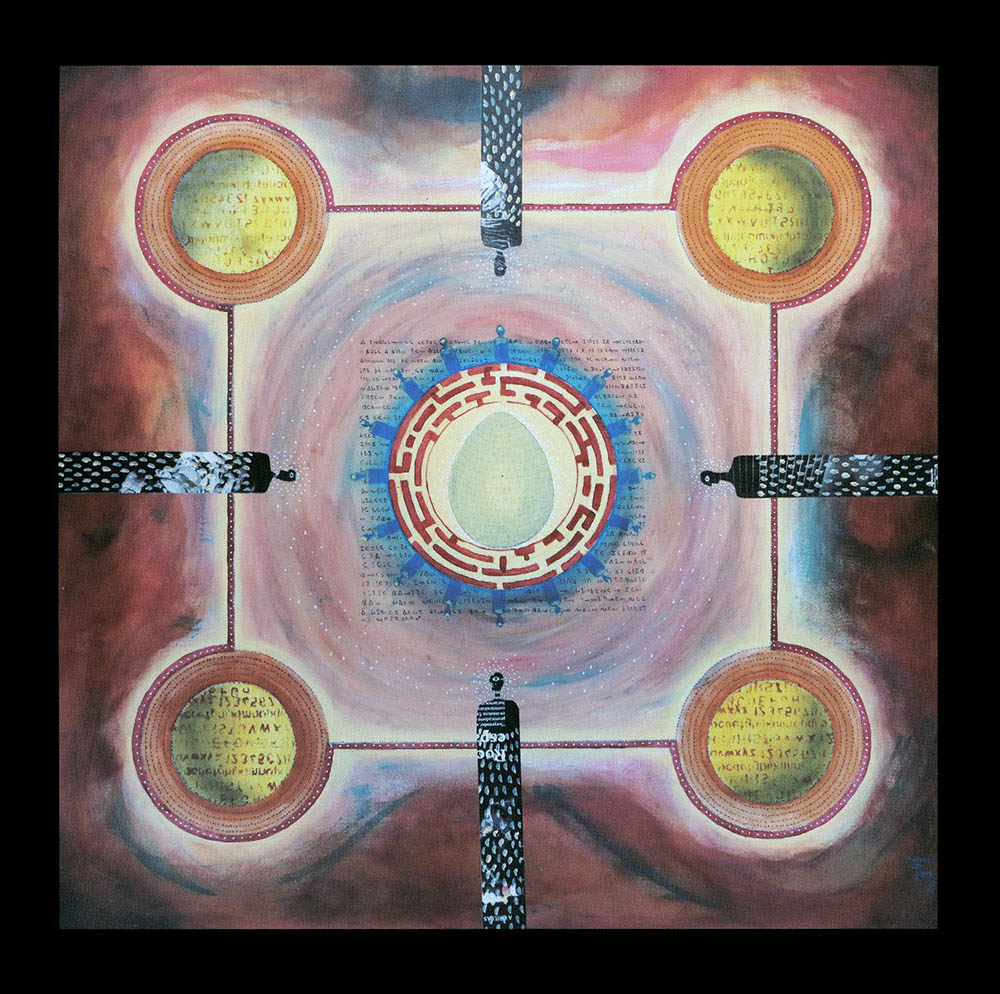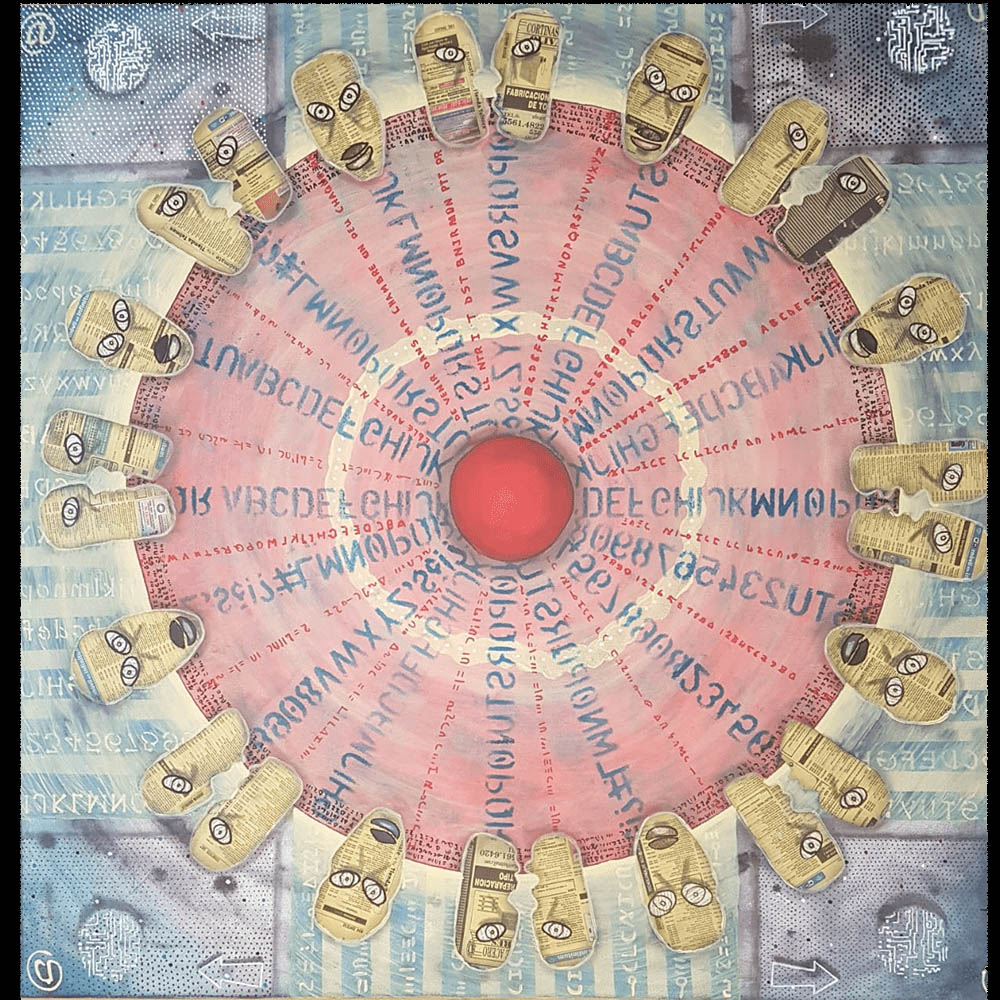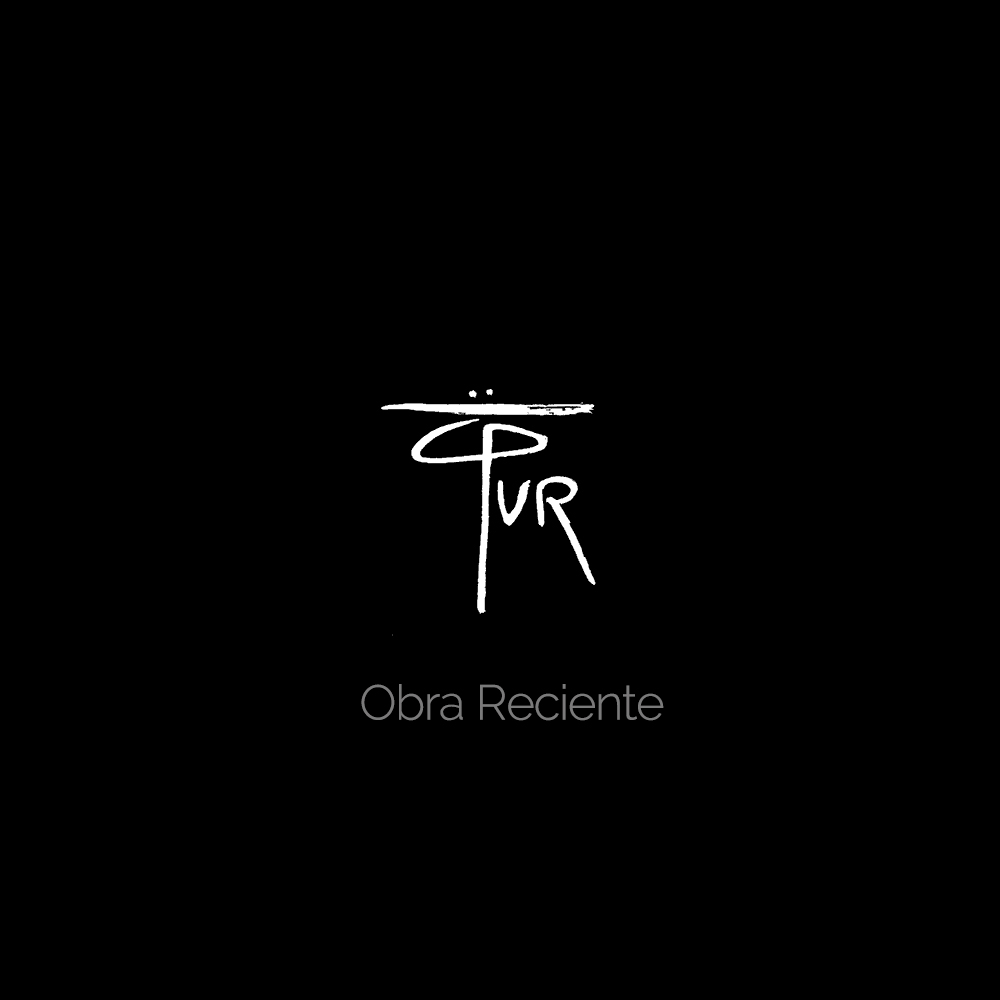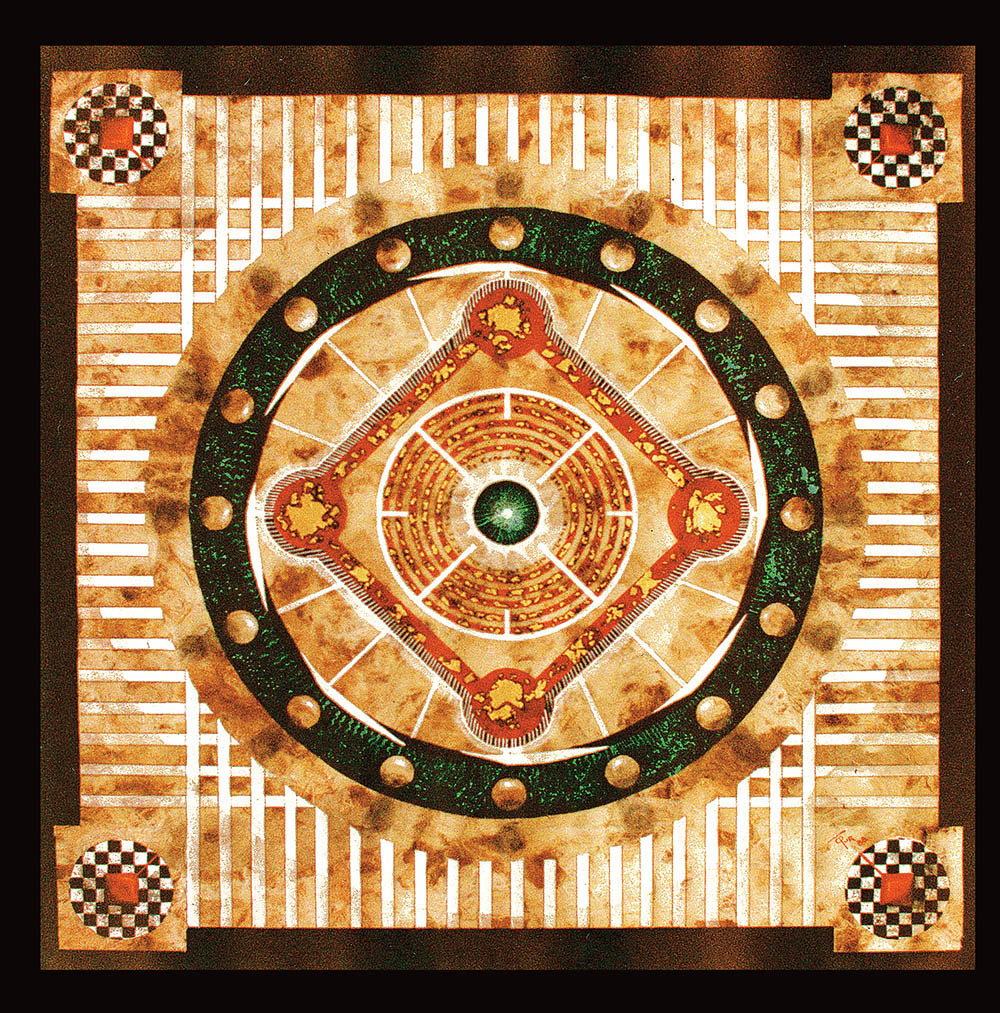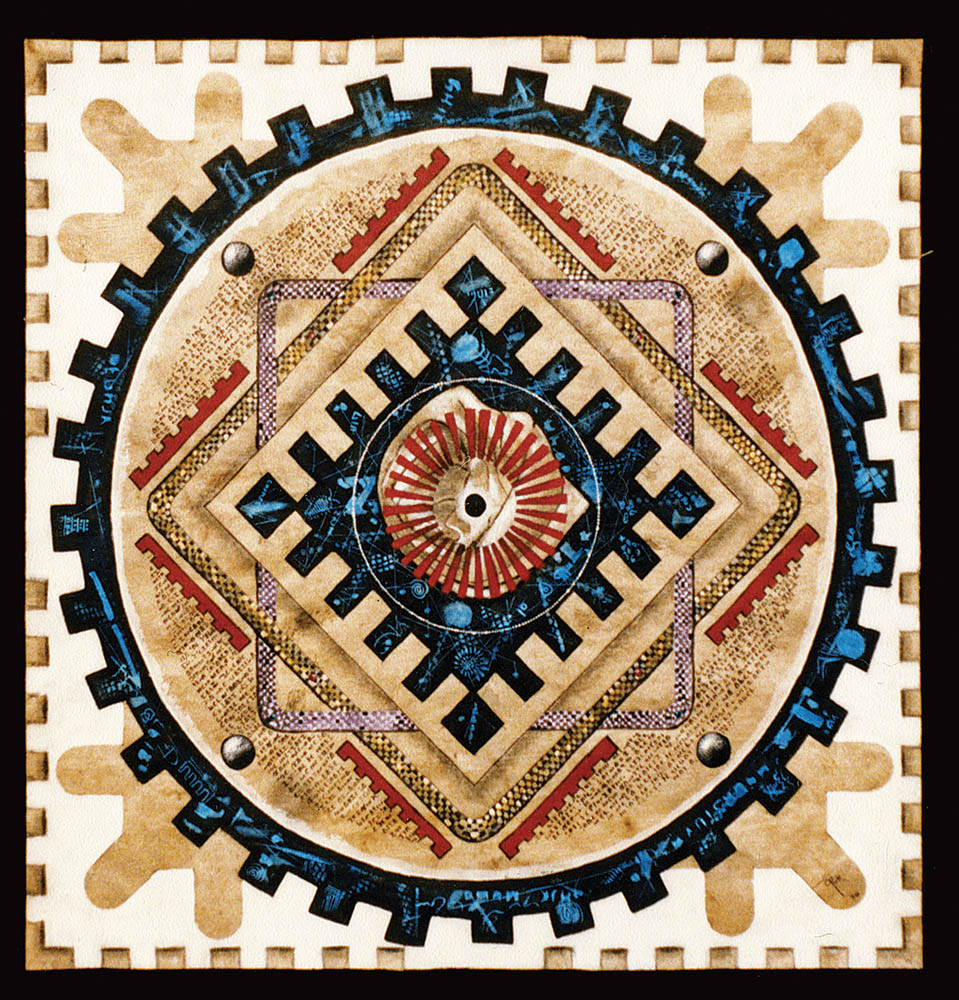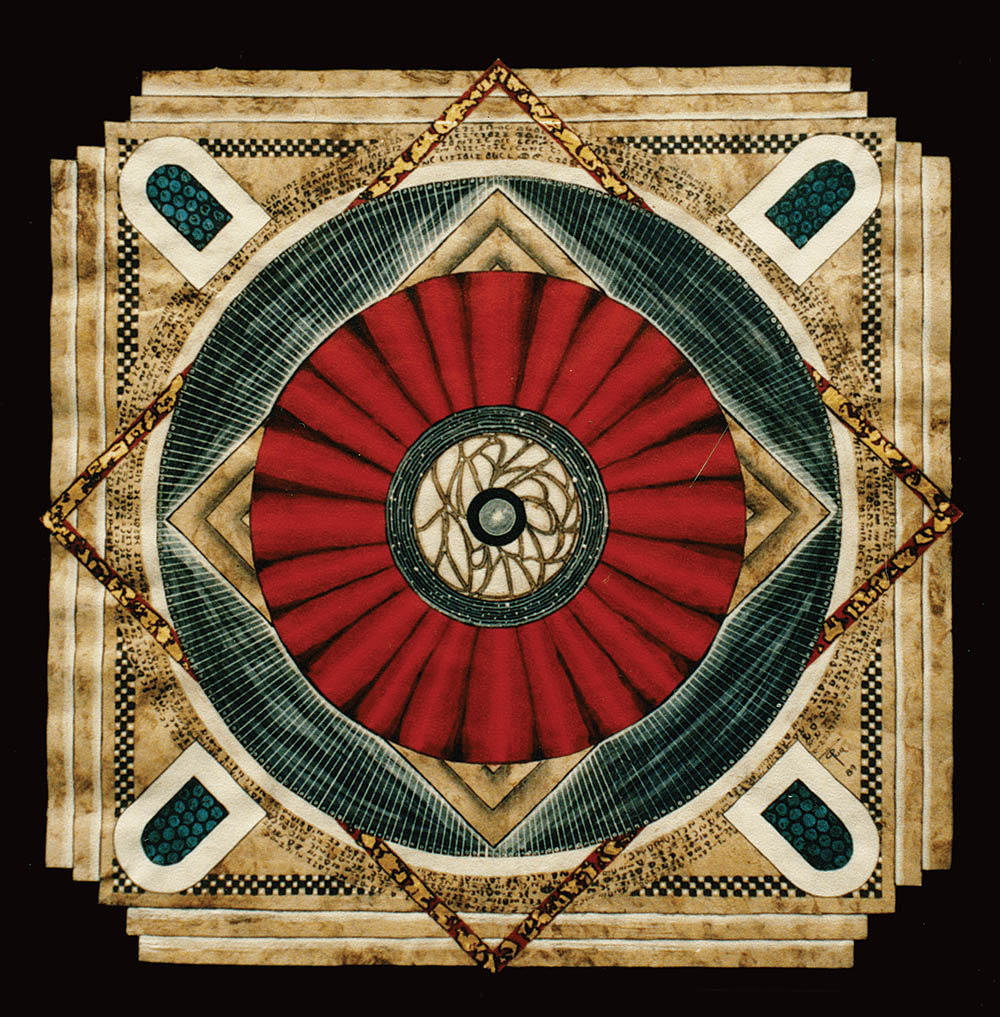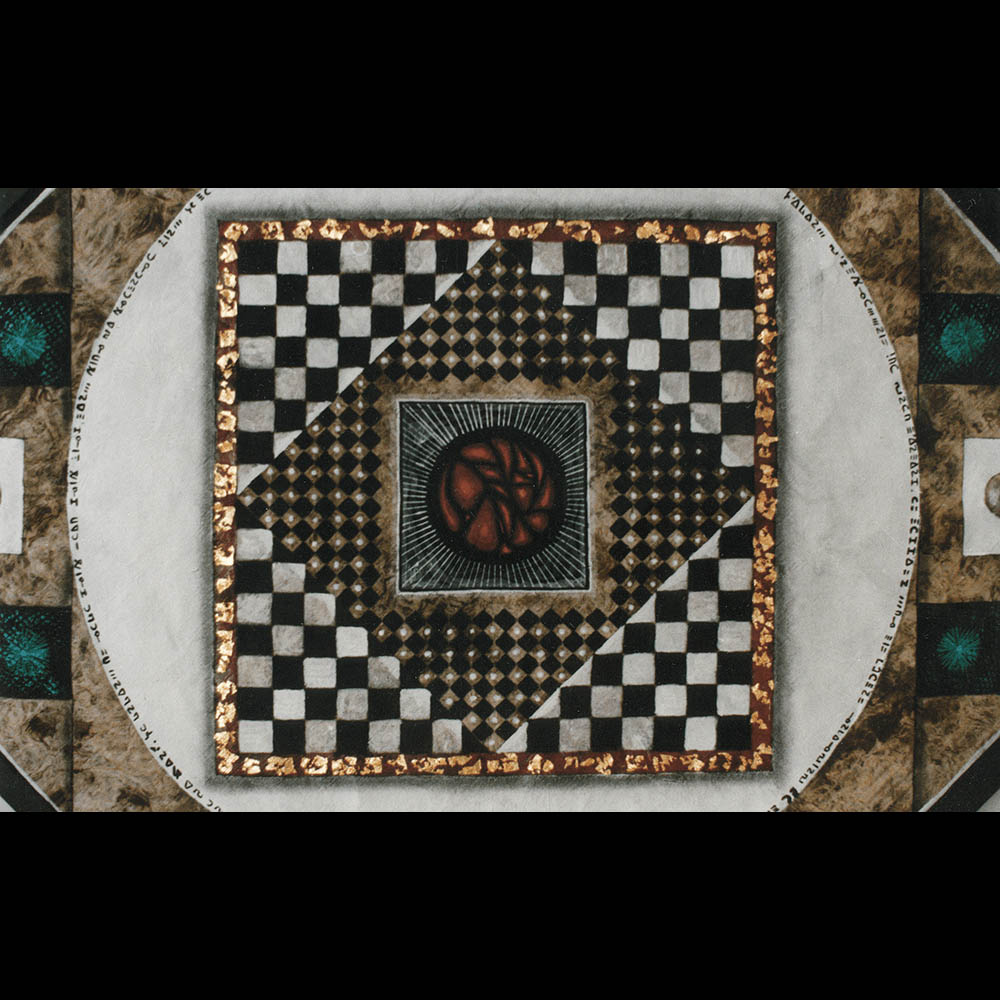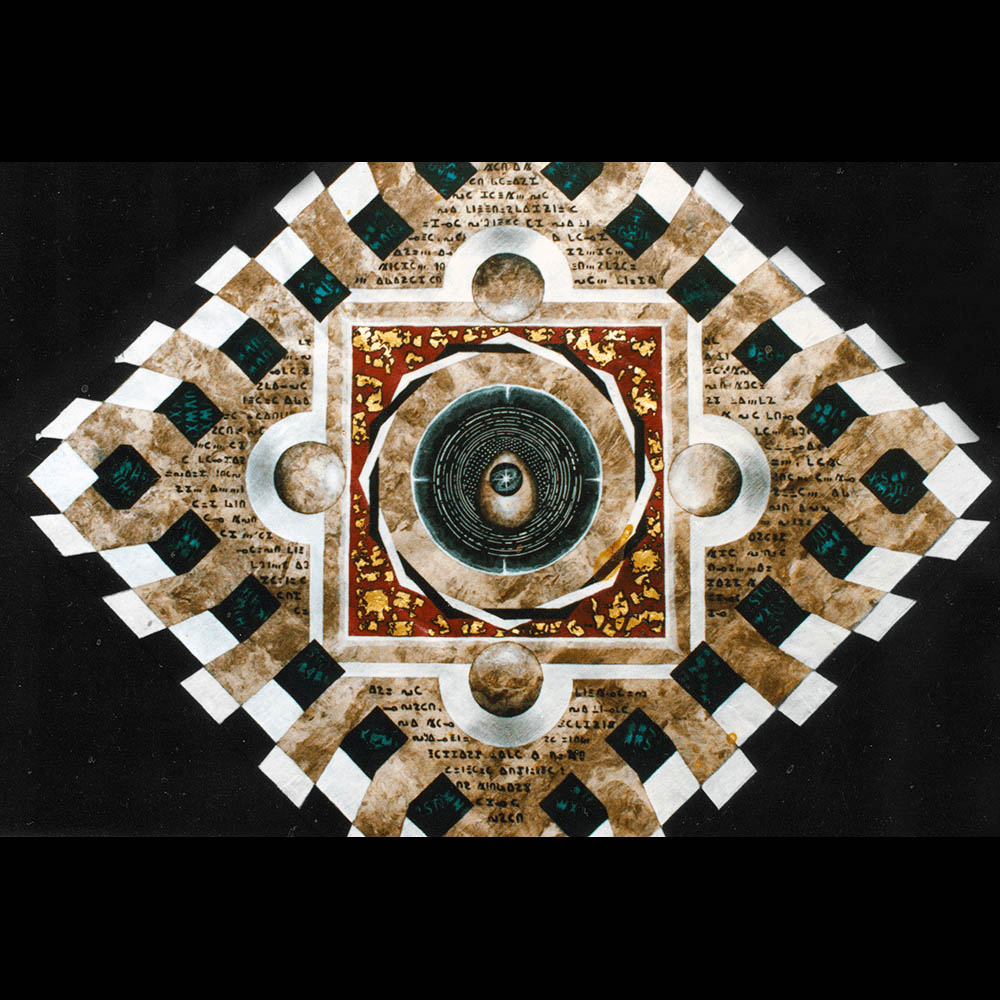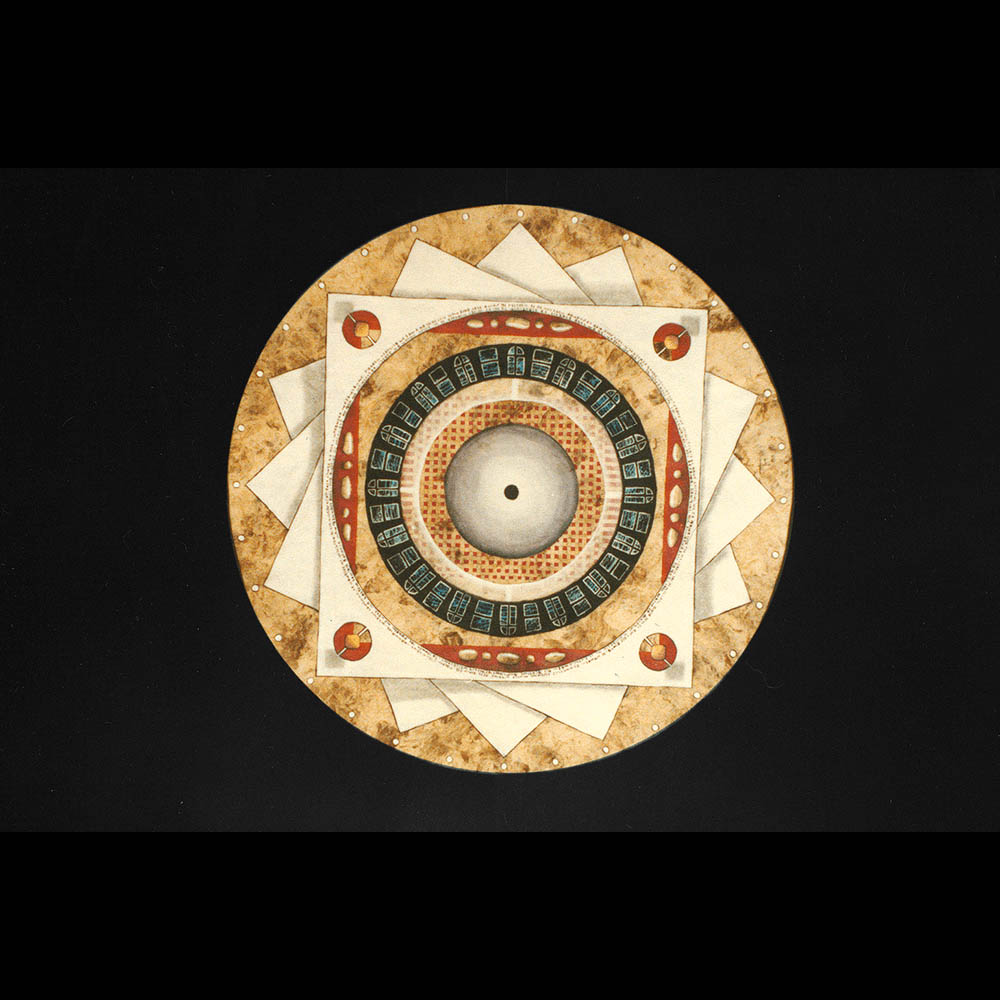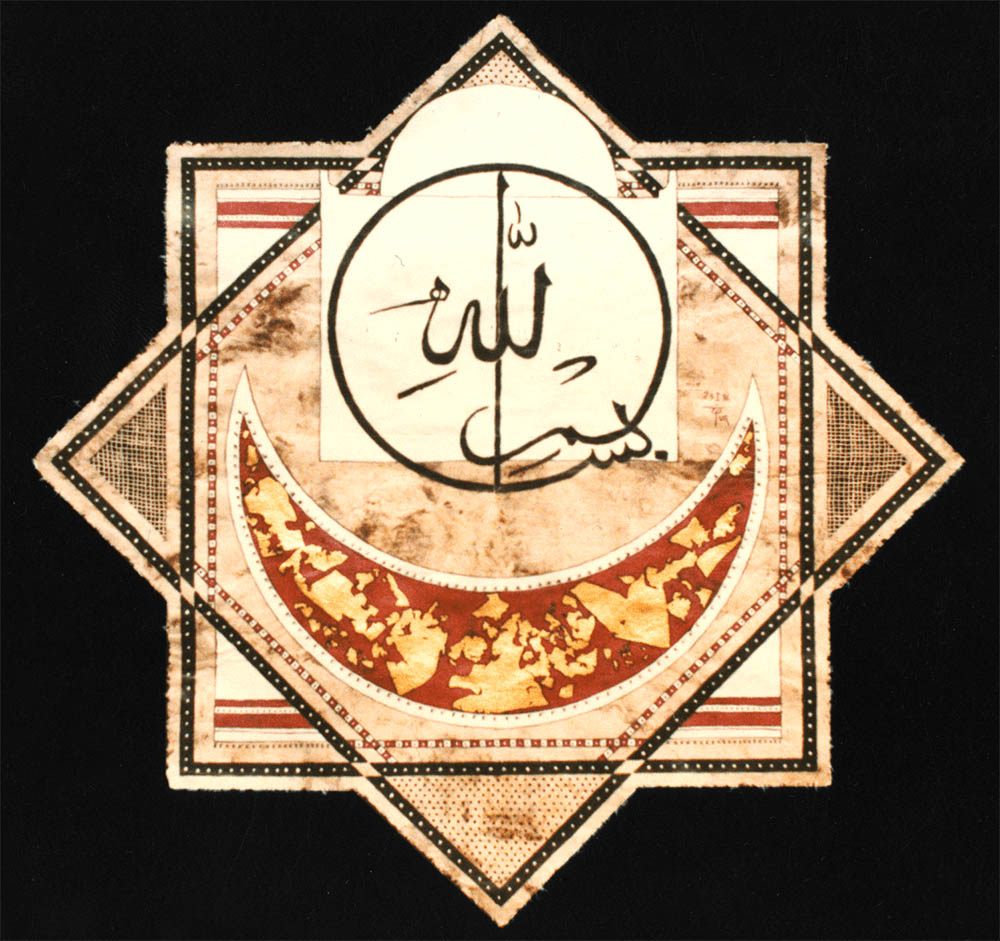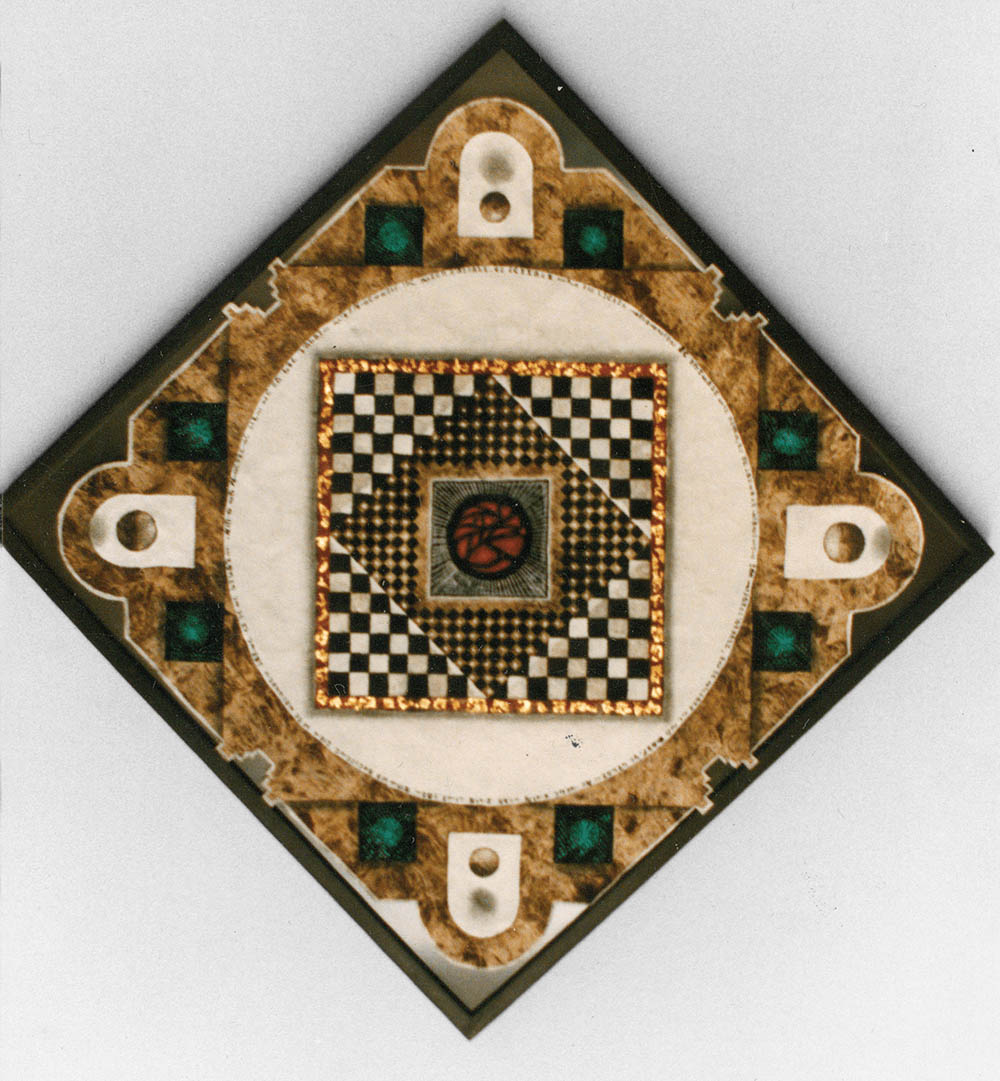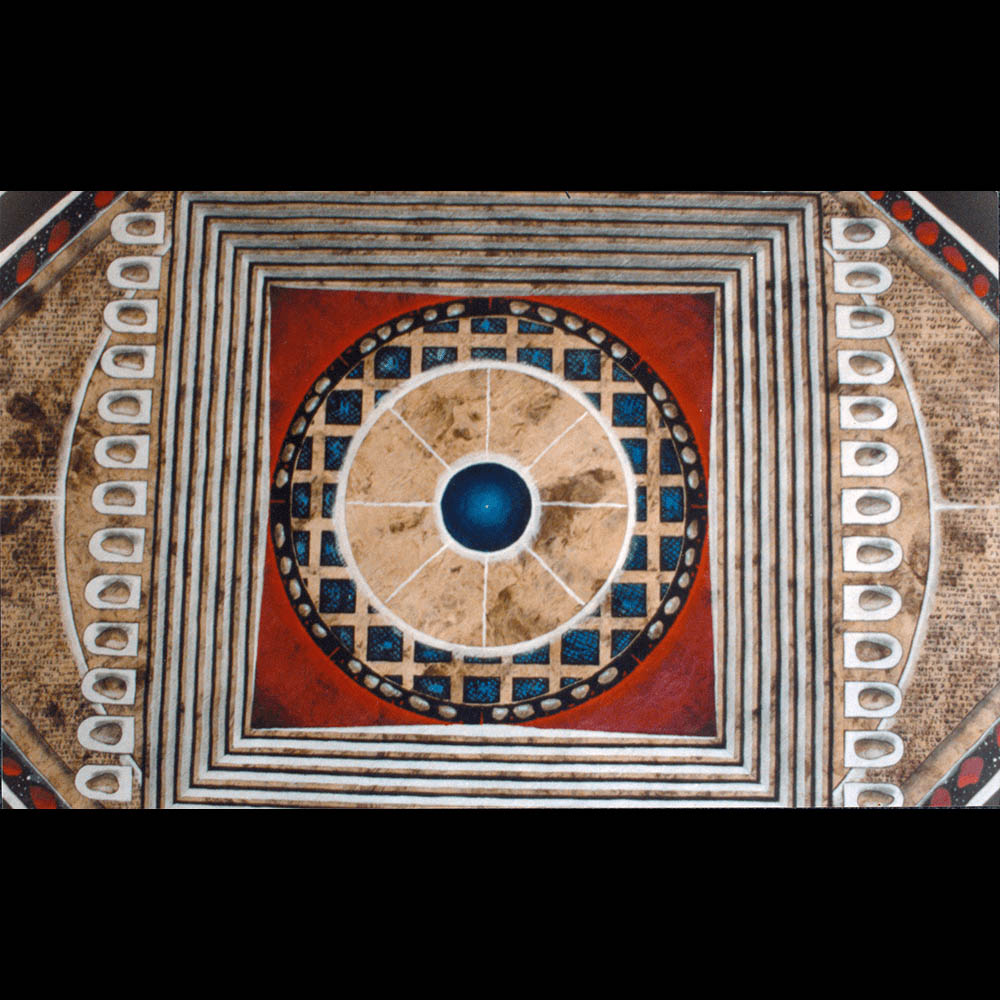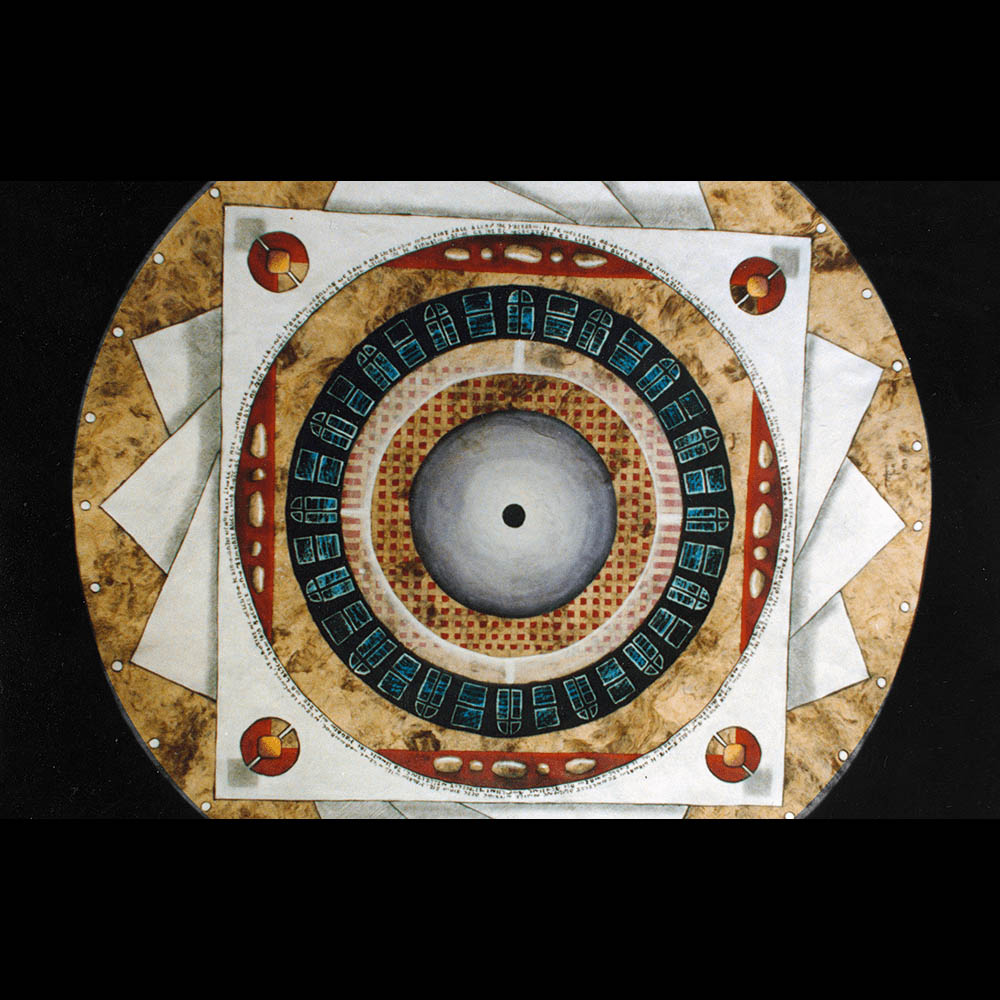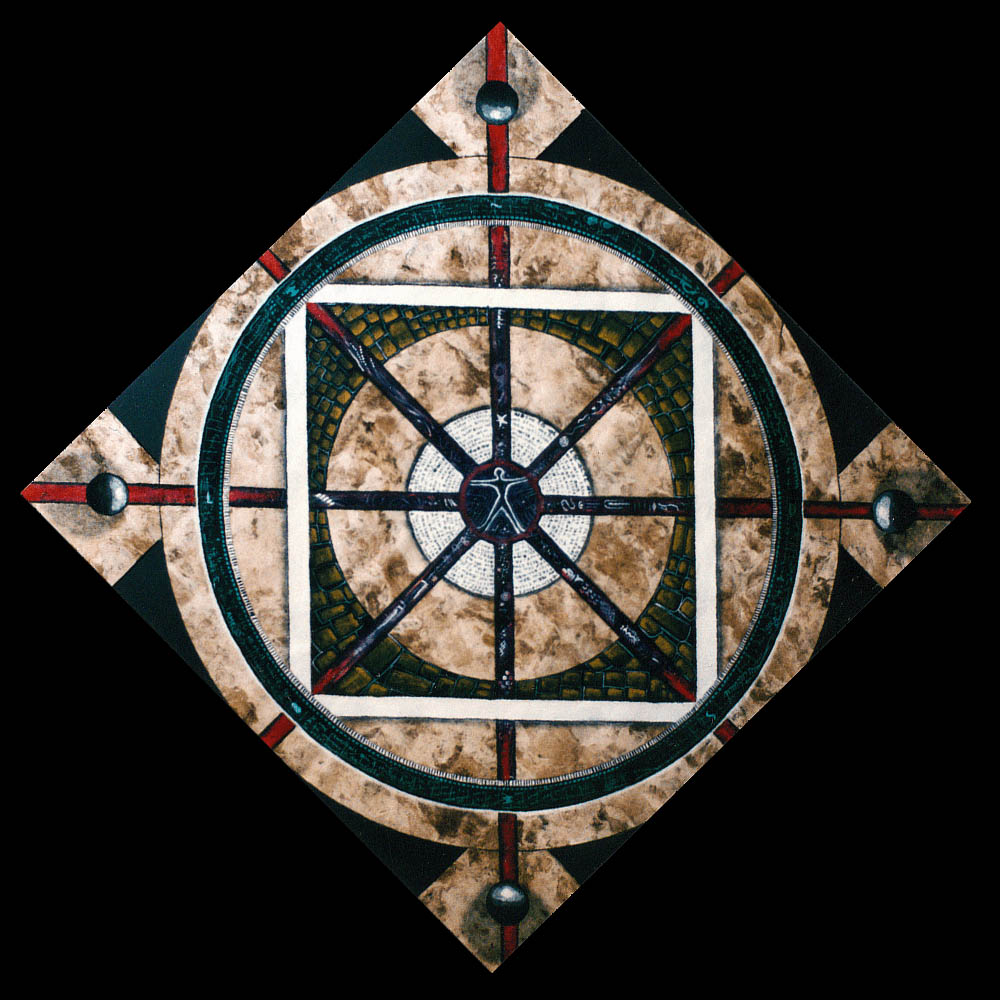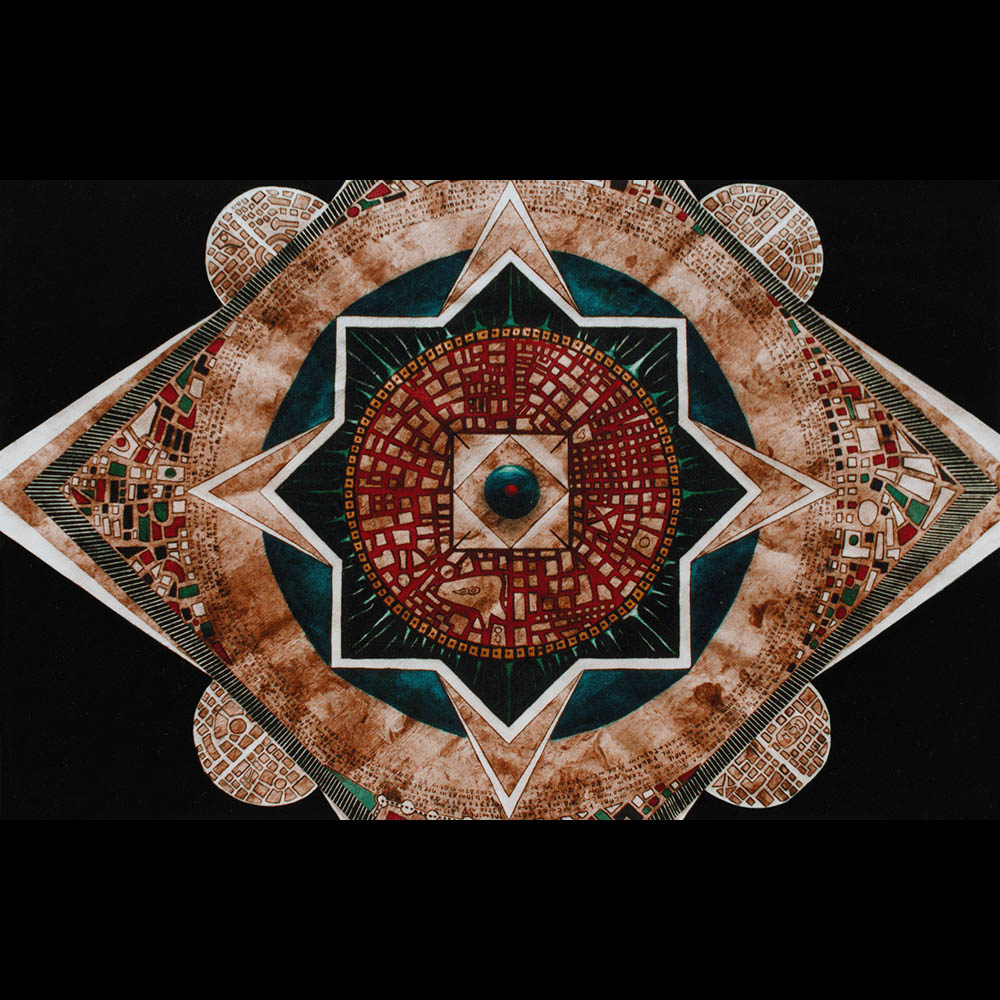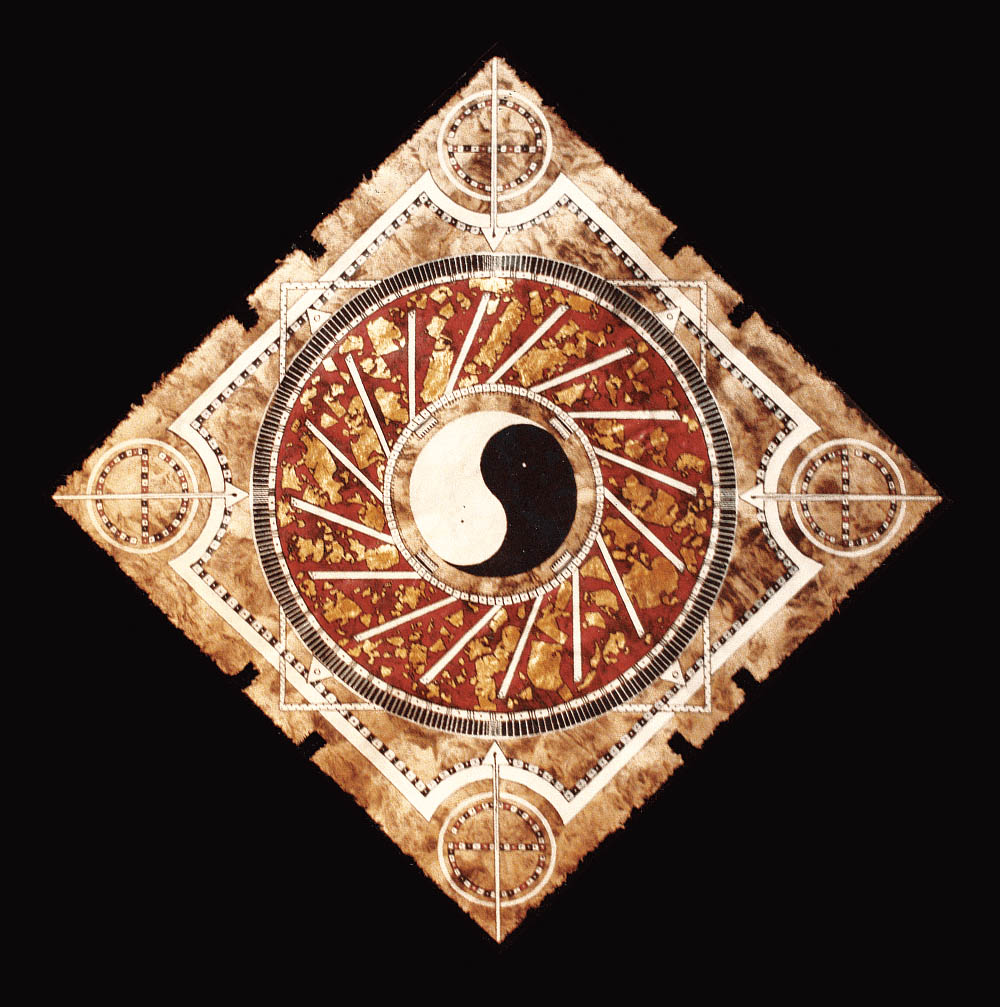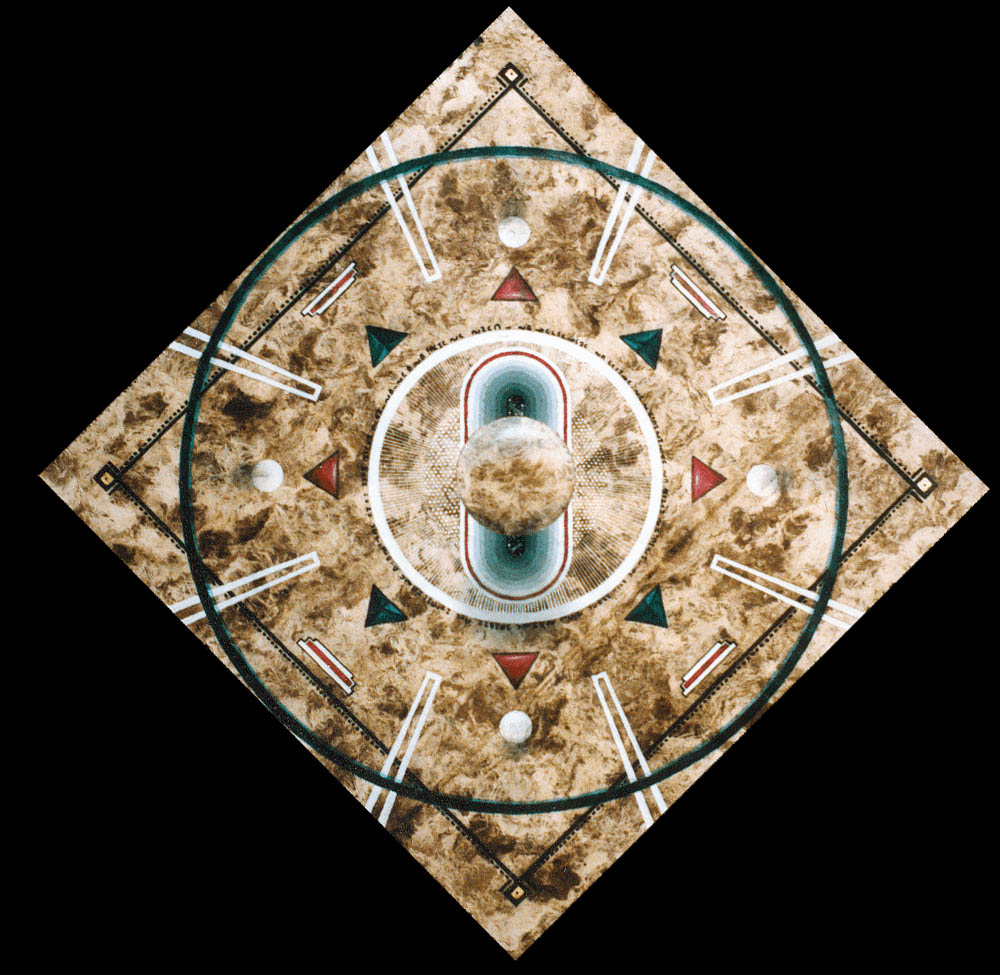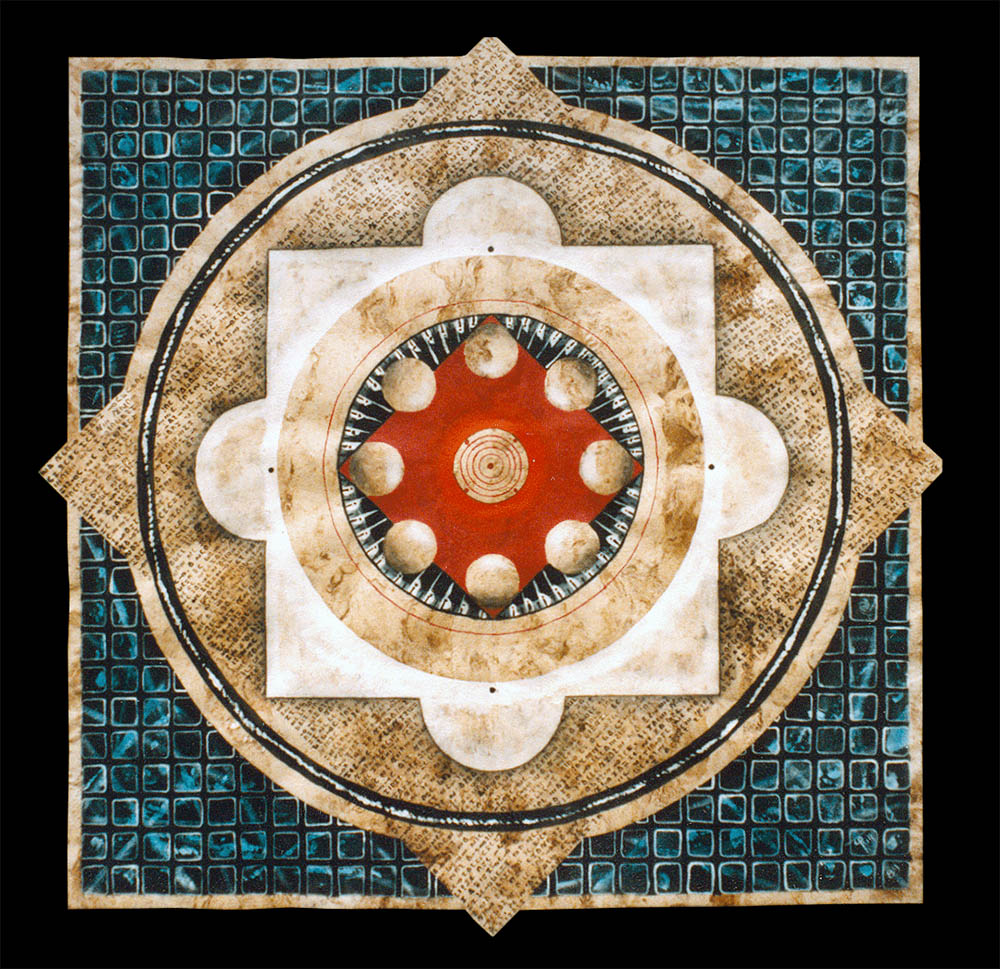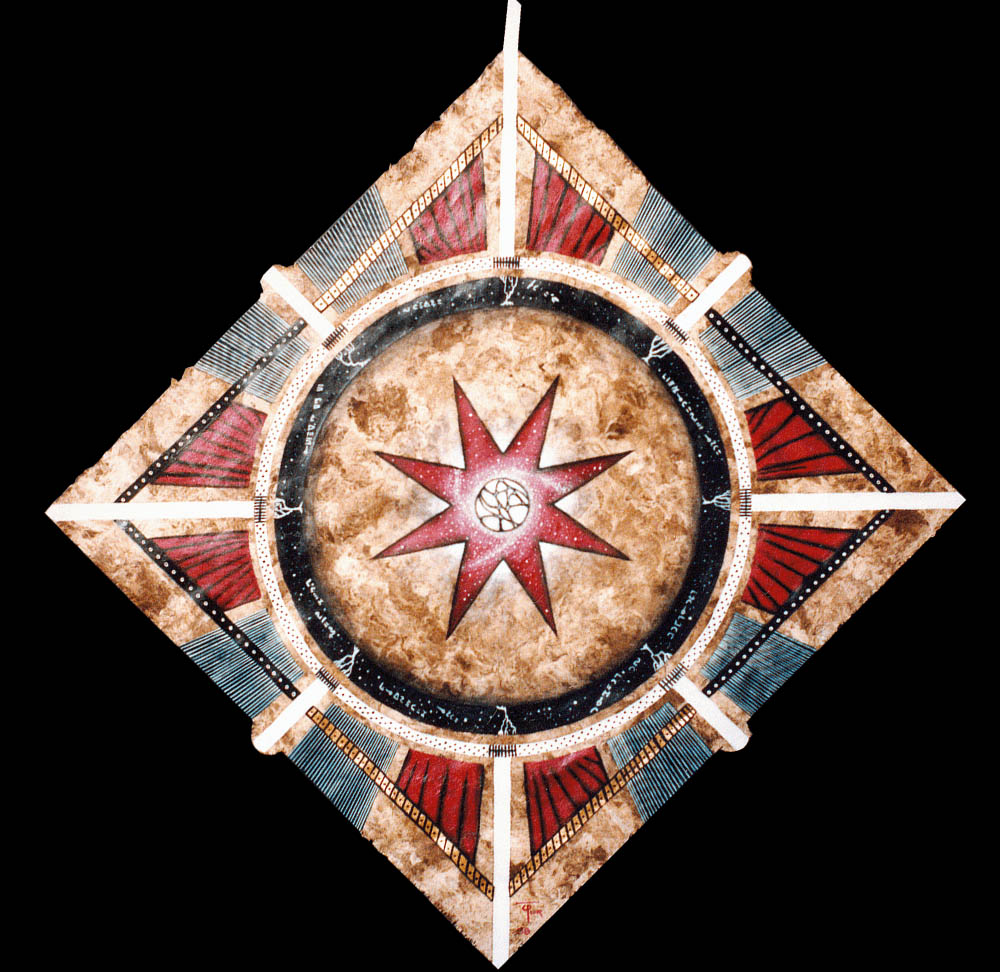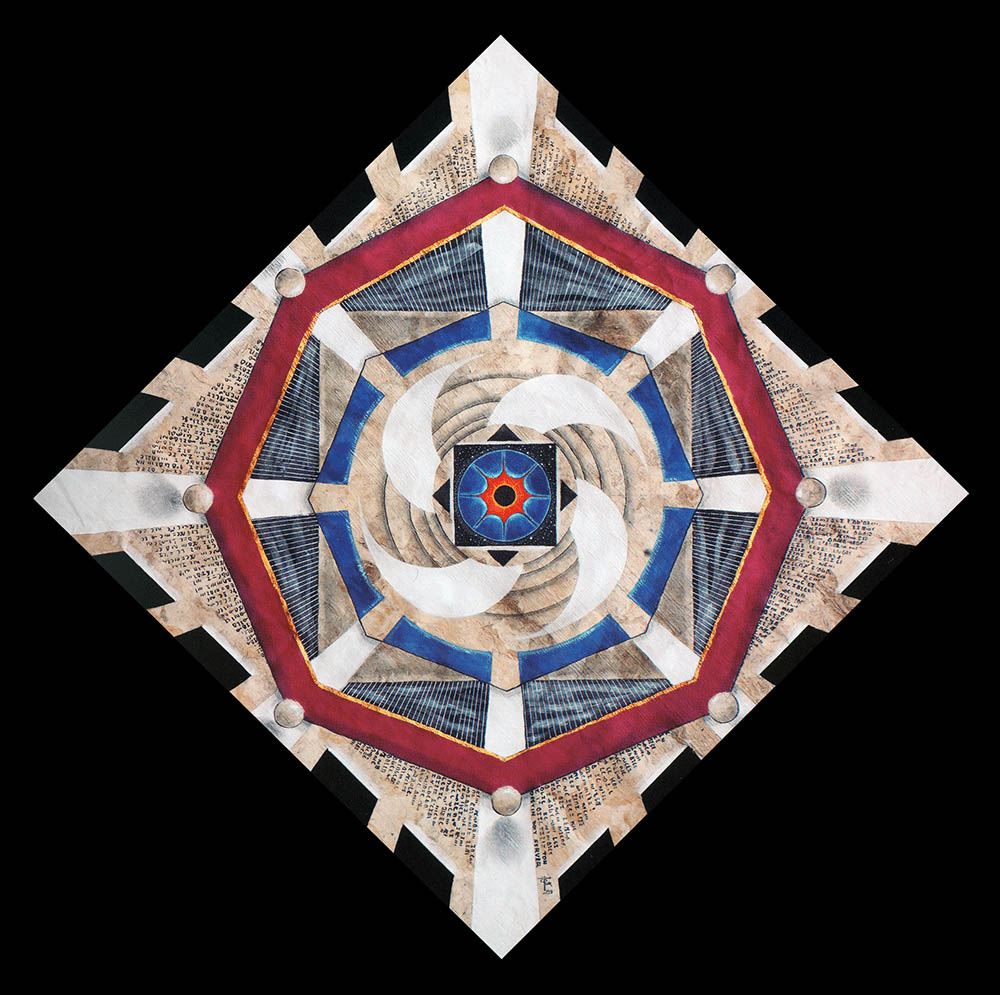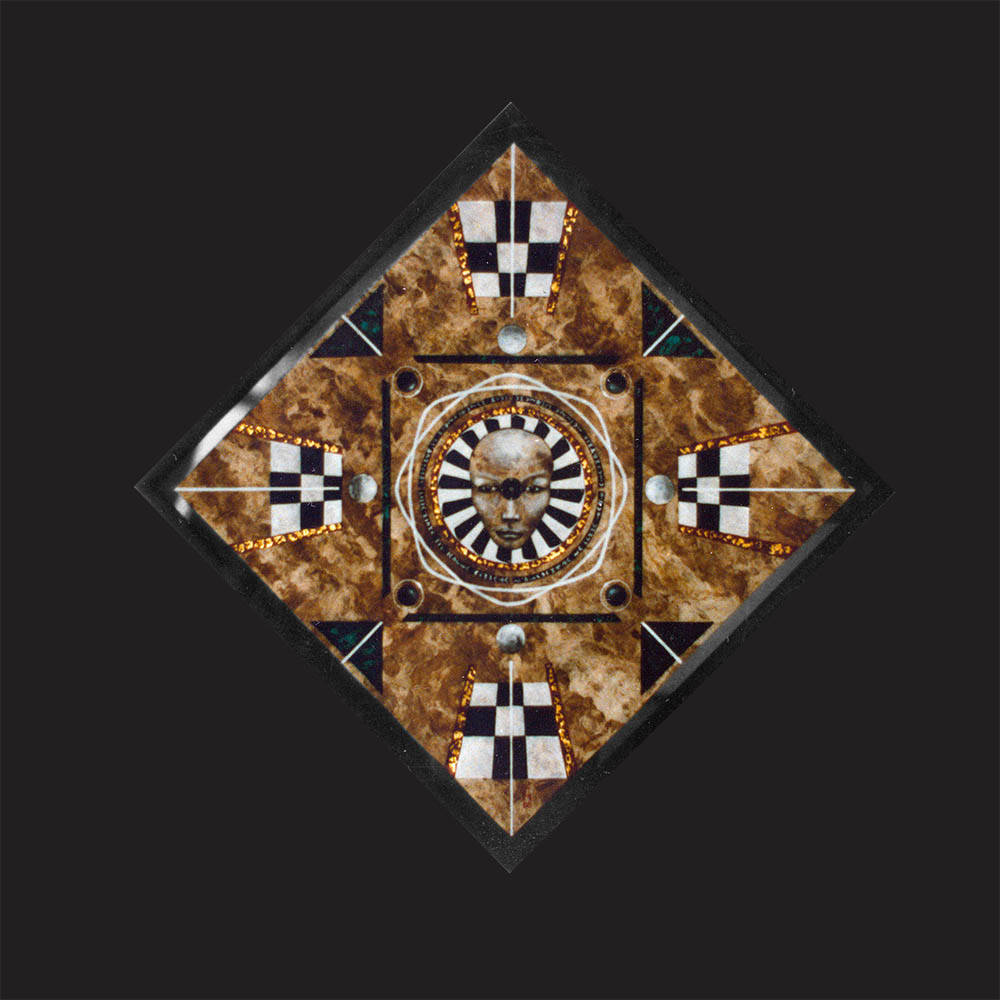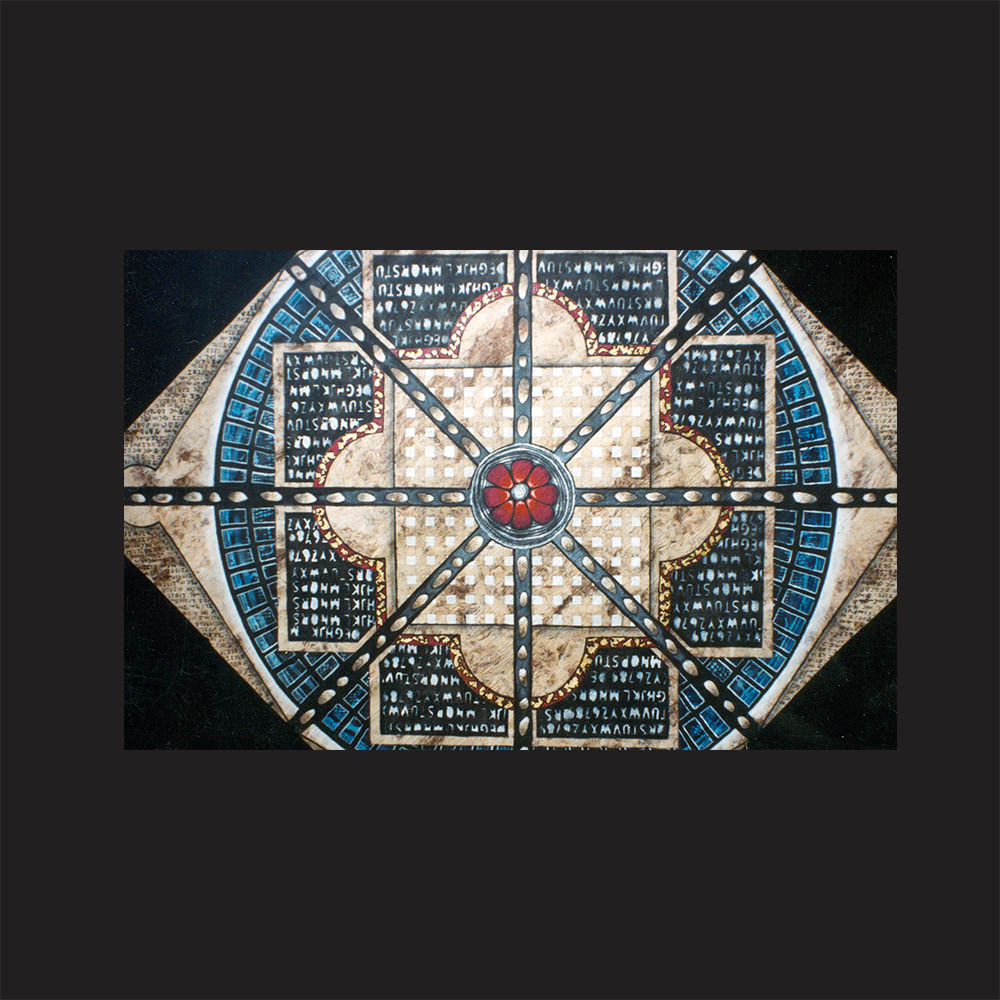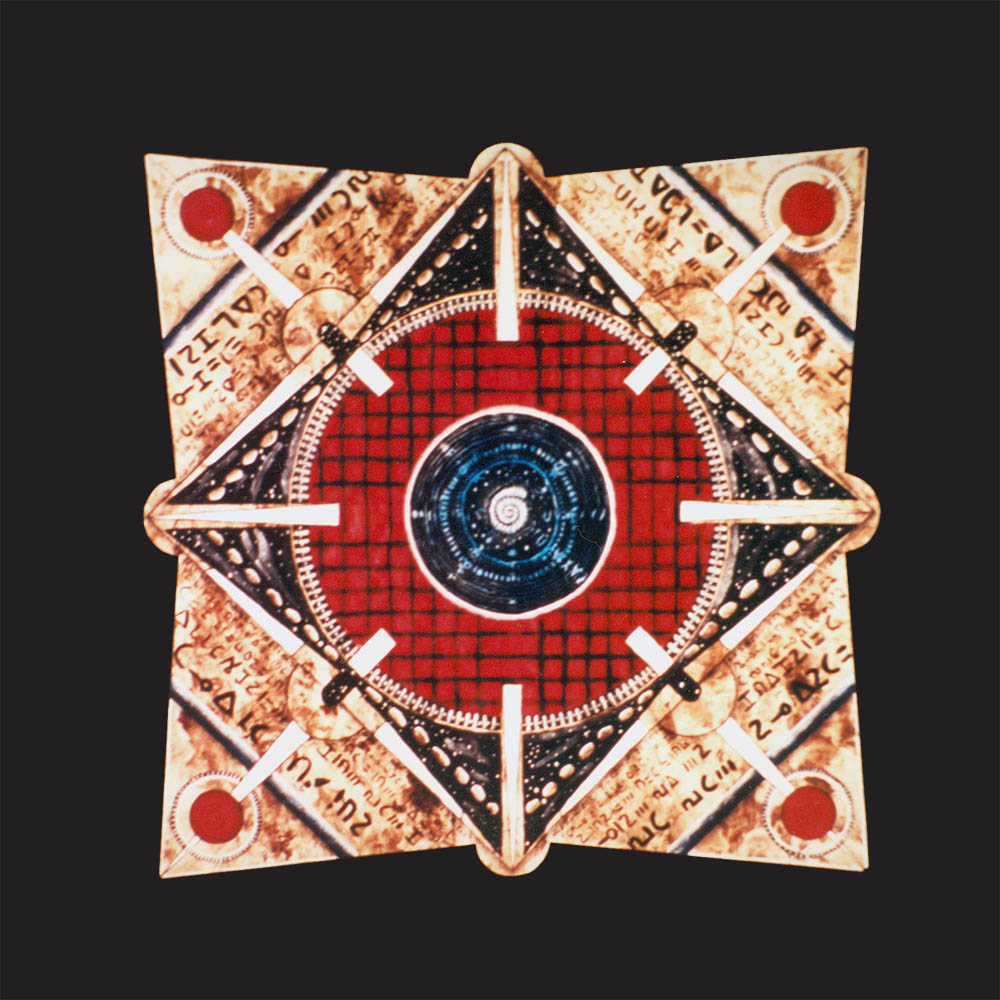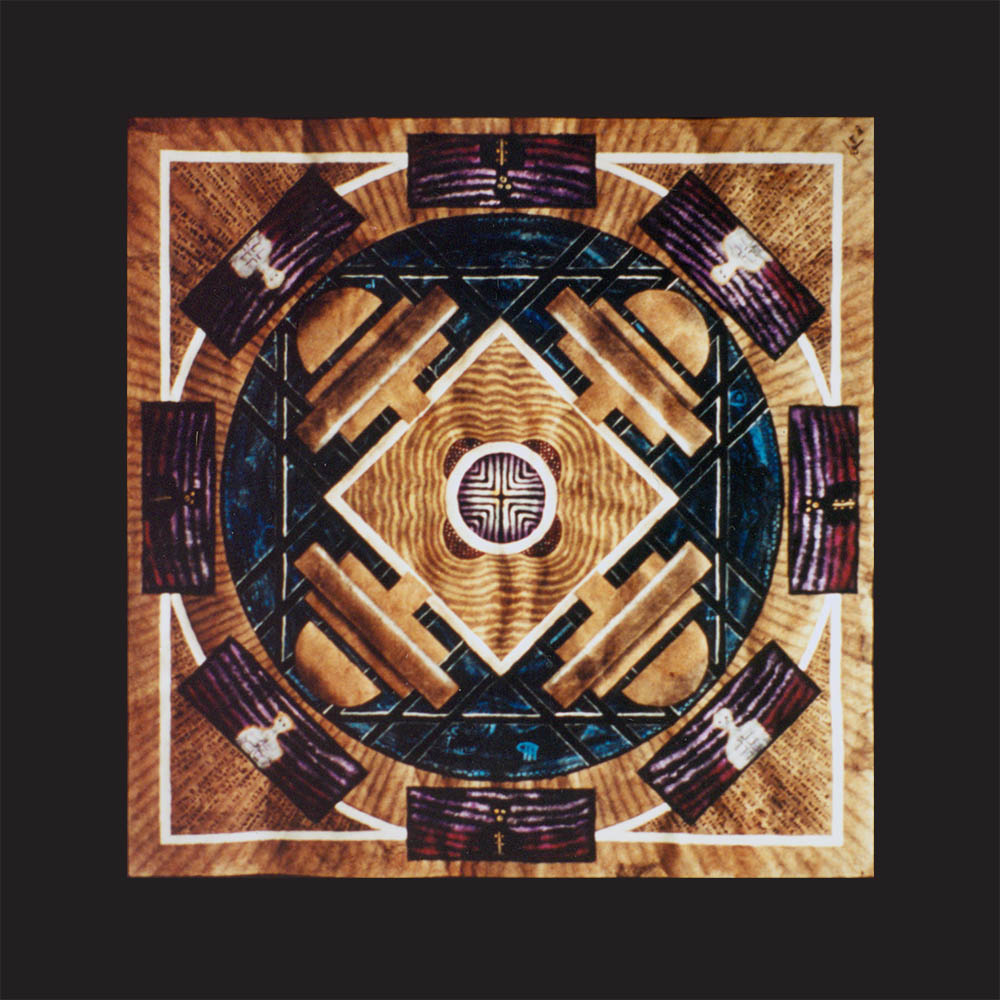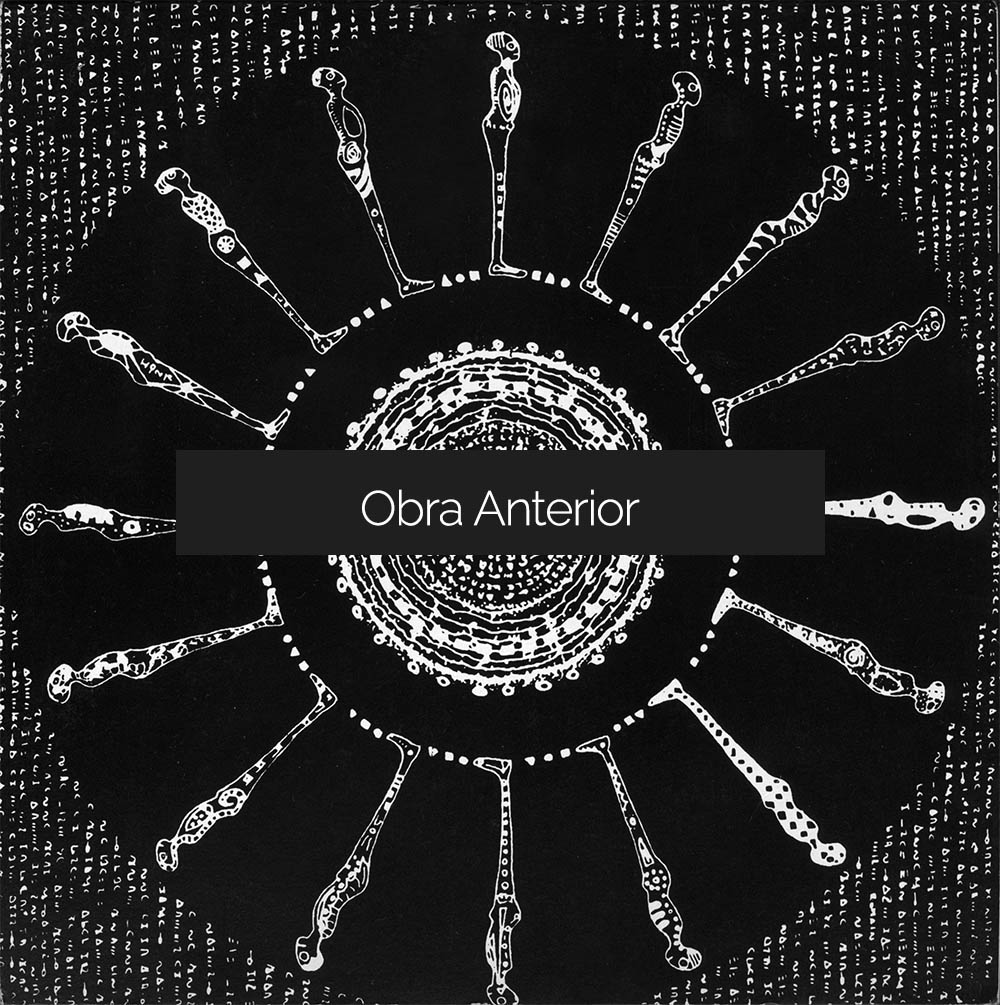Mandalas
An instrument of peace
The Mandala figure has been unfortunately and fortunately highlighted in recent years.
Unfortunately, in the New Age era it is promoted as a banner of an instant spiritual movement with the perversions, which often, accompany it.
Fortunately, and in Western culture, especially thanks to the research work of Carl Jung. Deep searches highlighted the archetype’s relevance, explicitly or implicitly in all cultures. Today it is imperative that we recover and re-dignify this symbol that is revealed as another instrument that invites to join all the peace efforts that our humanity needs so much. We talk about climate crisis, social injustices or violence normalization; any contribution to raise awareness and sow peace is welcome.
Through these pictorial representations, I want to join the numerous efforts of a world in turbulence. My concern as an artist, psychotherapist and traveler of our era is questioned every time I witness reactions, usually automatic, that daily run over the possibilities of peace that constantly appear before us.
It is very blinding and tempting to exclude when we are excluded.
Very automatic to judge when we are judged.
Very easy to be violent when we are violated.
Often, the pain in our wounds is so strong that we lose empathy in front of the other’s pain.
How then can we focus towards a better and constructive answer with all these accidents that we have suffered?
The traumas we have lived were awkwardly inflicted on us, and often, unfortunately transmitted by the people we love most. Hurt, we had to recognize and gather the torn fragments of our biographies.
In these years of living with the mandala, I have received many lessons. I speak of the different mandalas that I have been able to contemplate. Be the wise drawings with perfect geometry of a harmonizing nature in the strokes of its rocks, vegetables and organisms. Be the multiple human representations like the rosettes of cathedrals, the Aztec’s stone of the sun, the gothic labyrinths, the universal architectures and of course the Tibetan or Hindu mandalas of the East. I also include the practice of the conception of my mandalas for several years now.
For all this, I invite, through my expression in these works, to consider the potential peace of all mandala.
Contemplation and elaboration of the mandala works as a spiritual exercise in meditation and action.
• When the mandala calls, it’s an invitation to concentration, often lost.
• When the mandala is contemplated, it inspires to discover nonsense elements that manage to combine in unsuspected harmony.
• When the mandala pushes its creation, through a demanding and disciplined practice, it allows us to go through, arrange, dignify and heal the injustice of our wounds and despair.
The mandala calls, concentrates, raises awareness, disciplines, arranges, harmonizes, dignifies. Therefore heals.
THE MANDALA: A THERAPEUTIC AESTHETIC.
AS OUR HORIZON, MARKED BY ITS FOUR CARDINAL POINTS, IN A PERFECTLY DRAWN CIRCLE, OF WHICH EACH ONE IS RESPONSIBLE FOR LIVING IN ITS CENTER, THE MANDALA IS AN INSTRUMENT OF PEACE.
Guy Pierre Tur, November 2019
Unfortunately, in the New Age era it is promoted as a banner of an instant spiritual movement with the perversions, which often, accompany it.
Fortunately, and in Western culture, especially thanks to the research work of Carl Jung. Deep searches highlighted the archetype’s relevance, explicitly or implicitly in all cultures. Today it is imperative that we recover and re-dignify this symbol that is revealed as another instrument that invites to join all the peace efforts that our humanity needs so much. We talk about climate crisis, social injustices or violence normalization; any contribution to raise awareness and sow peace is welcome.
Through these pictorial representations, I want to join the numerous efforts of a world in turbulence. My concern as an artist, psychotherapist and traveler of our era is questioned every time I witness reactions, usually automatic, that daily run over the possibilities of peace that constantly appear before us.
It is very blinding and tempting to exclude when we are excluded.
Very automatic to judge when we are judged.
Very easy to be violent when we are violated.
Often, the pain in our wounds is so strong that we lose empathy in front of the other’s pain.
How then can we focus towards a better and constructive answer with all these accidents that we have suffered?
The traumas we have lived were awkwardly inflicted on us, and often, unfortunately transmitted by the people we love most. Hurt, we had to recognize and gather the torn fragments of our biographies.
In these years of living with the mandala, I have received many lessons. I speak of the different mandalas that I have been able to contemplate. Be the wise drawings with perfect geometry of a harmonizing nature in the strokes of its rocks, vegetables and organisms. Be the multiple human representations like the rosettes of cathedrals, the Aztec’s stone of the sun, the gothic labyrinths, the universal architectures and of course the Tibetan or Hindu mandalas of the East. I also include the practice of the conception of my mandalas for several years now.
For all this, I invite, through my expression in these works, to consider the potential peace of all mandala.
Contemplation and elaboration of the mandala works as a spiritual exercise in meditation and action.
• When the mandala calls, it’s an invitation to concentration, often lost.
• When the mandala is contemplated, it inspires to discover nonsense elements that manage to combine in unsuspected harmony.
• When the mandala pushes its creation, through a demanding and disciplined practice, it allows us to go through, arrange, dignify and heal the injustice of our wounds and despair.
The mandala calls, concentrates, raises awareness, disciplines, arranges, harmonizes, dignifies. Therefore heals.
THE MANDALA: A THERAPEUTIC AESTHETIC.
AS OUR HORIZON, MARKED BY ITS FOUR CARDINAL POINTS, IN A PERFECTLY DRAWN CIRCLE, OF WHICH EACH ONE IS RESPONSIBLE FOR LIVING IN ITS CENTER, THE MANDALA IS AN INSTRUMENT OF PEACE.
Guy Pierre Tur, November 2019
Recent Work
Mandalas
The World of the Mandala
Wisely, the Mandala grabs the artist and takes him into unsuspected landscapes: Just as the labyrinth of life itself—into which we enter without knowing its finish line, if it actually has one—the mandala demands courage. Through infinite sources of crossed information, the mandala weaves a complex net of messages, symbols, images, and colors that captivate us through its seductive chants and leads us to an odd feeling of confusion without hope, as if we would never be able to get our bearings again. The spell works through a sophisticated mechanism based on trust and powerful attraction. Comparable to any love story, with all its accompanying obsessions, one knows how the mandala starts but not how it will continue, nor even how it will end. The creative force pushes us to move beyond individualism.
The imperative desire to paint possesses us, pushing us to knock at the door of the Mandala with a mixture of excitement, fear, and also —why not to recognize it? —innocence. Everything begins with the most naïve and illusory feeling of carrying on exerting our own will until the moment when—lost in the forest of its many organisms, one finally realizes that one has been transformed into a mere instrument for the transmission of an archetypic form of which its only goal is to be born through a well-determined path. A path which, by the way, is unknown.
Sensitivity awakens through generous aesthetics exacerbated in the most intimate levels of humanity. The journey crosses through the unavoidable and difficult confusion. Who am I? Where am I going? And so many other questions that go along with the journey. At every moment, the forest becomes denser and darker. It all happens without an invitation to discover the recipe for producing the archetype. The glance gets cloudy and intellectual reflection loses its compass. The only thing still operating, deciding, and leading with implacable determination is the Mandala itself.
Within the most hermetic secret of the mystery that surrounds us, the new form—belittled by the absolute ignorance of the one who fancies himself as the artist—is impregnated..
This is not only a challenging test; it also distorts all naively-structured thoughts. After the aridity of the desert of doubts and confusions, the new form emerges—defined and luminous, unannounced—in a dazzling explosion that imposes itself. The symbol radiates light together with an instructive experience of humbleness.
Once again, the Mandala uses the human—through a sophisticated network that feeds on our feelings, thoughts, calculations, and pieces of information—in order to exist.
The Mandala is created through us and, simultaneously, it creates us, nonstop.
When we look at it, we are infected by the next Mandala that will try to use us to be born and, thus, to create us again. I cannot remain unsensitive to the deep analogy that exists between creating and being created through a work, just as it happens in human encounters: creators and created ones turning in a permanent cycle.
Guy Pierre Tur
The imperative desire to paint possesses us, pushing us to knock at the door of the Mandala with a mixture of excitement, fear, and also —why not to recognize it? —innocence. Everything begins with the most naïve and illusory feeling of carrying on exerting our own will until the moment when—lost in the forest of its many organisms, one finally realizes that one has been transformed into a mere instrument for the transmission of an archetypic form of which its only goal is to be born through a well-determined path. A path which, by the way, is unknown.
Sensitivity awakens through generous aesthetics exacerbated in the most intimate levels of humanity. The journey crosses through the unavoidable and difficult confusion. Who am I? Where am I going? And so many other questions that go along with the journey. At every moment, the forest becomes denser and darker. It all happens without an invitation to discover the recipe for producing the archetype. The glance gets cloudy and intellectual reflection loses its compass. The only thing still operating, deciding, and leading with implacable determination is the Mandala itself.
Within the most hermetic secret of the mystery that surrounds us, the new form—belittled by the absolute ignorance of the one who fancies himself as the artist—is impregnated..
This is not only a challenging test; it also distorts all naively-structured thoughts. After the aridity of the desert of doubts and confusions, the new form emerges—defined and luminous, unannounced—in a dazzling explosion that imposes itself. The symbol radiates light together with an instructive experience of humbleness.
Once again, the Mandala uses the human—through a sophisticated network that feeds on our feelings, thoughts, calculations, and pieces of information—in order to exist.
The Mandala is created through us and, simultaneously, it creates us, nonstop.
When we look at it, we are infected by the next Mandala that will try to use us to be born and, thus, to create us again. I cannot remain unsensitive to the deep analogy that exists between creating and being created through a work, just as it happens in human encounters: creators and created ones turning in a permanent cycle.
Guy Pierre Tur
Previous Work
A Therapeutic Aesthetic
The hand that traces the never-ending lines knows it. Or the hands. Perhaps, in order to draw a mandala, it is necessary to be ambidextrous and, therefore, audacious. Here, the painter’s hand is a bird going along the edge of a nest of such circularity that it makes us think about the infinite. A body opening itself to another body, for example. An egg at the center of it all.
The therapeutic aesthetic laid out in these pieces by Guy Pierre Tur is the metaphor for mutation: a mouth that opens up and names; the speech as an opportunity for change, as a transformation arranged in the ritual of the circle itself, when a tribe engages in a dialogue.
What is the opportunity for the person looking at those mandalas? To get lost and, paradoxically, to find an unforeseen path. Disorientation is a part of the journey—of delirium, that is.
El emblema del mandala encuentra en esas representaciones su potencia de viaje y retorno, de huída y arraigo. Como si mirar alrededor o girar en un eje propio, a la manera de un baile gozoso, otorgara horizontes que no se prevenían antes de hacer los círculos con el cuerpo y la mente.
The emblem of the mandala finds in these representations its power to begin a journey and to return, to escape and to take root. It is as if looking, or whirling, around its own axis—as in a joyful dance—would offer horizons that were not foreseen before making circles with the body and the mind.
To move elsewhere and fix up a new home. To allow for time the be transfigured like a sculpture that melts all of a sudden—and turns. To surround the center of things in order to open up and give in. To lead the peculiar circularity of the bonfire that stays at the center.
Guy Pierre Tur stops at details as an obsessed person. The pages in the Yellow Pages are bodies or tables with minimal lists. Magazine clippings compose other figures. And the words and signs in the secret alphabet that he has developed allow for unique readings, perhaps uttered in babbles or guttural sounds, as if each of the elements that compose these pieces actually came from a time previous to speech.
Texto de Daniela Tarazona
The therapeutic aesthetic laid out in these pieces by Guy Pierre Tur is the metaphor for mutation: a mouth that opens up and names; the speech as an opportunity for change, as a transformation arranged in the ritual of the circle itself, when a tribe engages in a dialogue.
What is the opportunity for the person looking at those mandalas? To get lost and, paradoxically, to find an unforeseen path. Disorientation is a part of the journey—of delirium, that is.
El emblema del mandala encuentra en esas representaciones su potencia de viaje y retorno, de huída y arraigo. Como si mirar alrededor o girar en un eje propio, a la manera de un baile gozoso, otorgara horizontes que no se prevenían antes de hacer los círculos con el cuerpo y la mente.
The emblem of the mandala finds in these representations its power to begin a journey and to return, to escape and to take root. It is as if looking, or whirling, around its own axis—as in a joyful dance—would offer horizons that were not foreseen before making circles with the body and the mind.
To move elsewhere and fix up a new home. To allow for time the be transfigured like a sculpture that melts all of a sudden—and turns. To surround the center of things in order to open up and give in. To lead the peculiar circularity of the bonfire that stays at the center.
Guy Pierre Tur stops at details as an obsessed person. The pages in the Yellow Pages are bodies or tables with minimal lists. Magazine clippings compose other figures. And the words and signs in the secret alphabet that he has developed allow for unique readings, perhaps uttered in babbles or guttural sounds, as if each of the elements that compose these pieces actually came from a time previous to speech.
Texto de Daniela Tarazona







